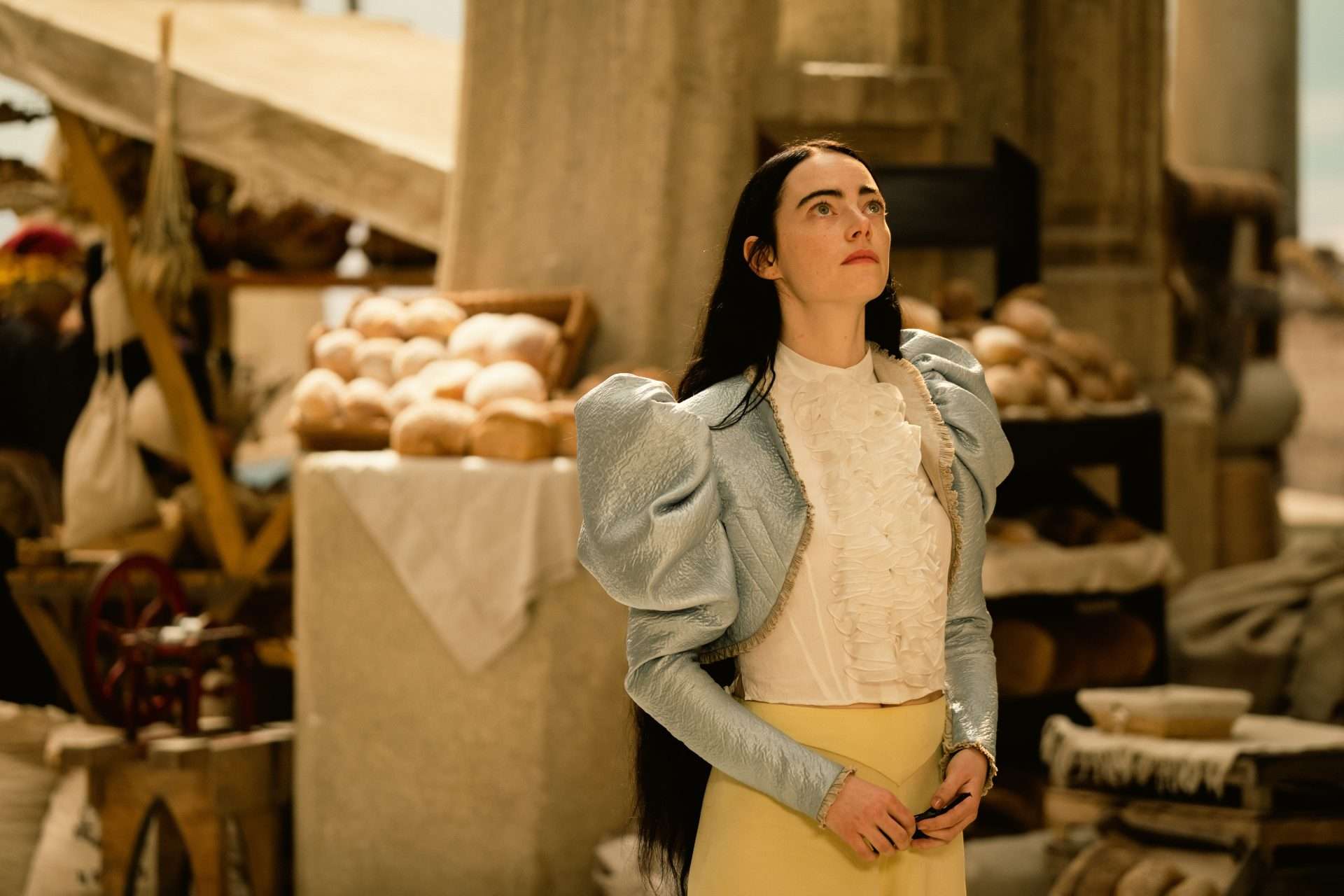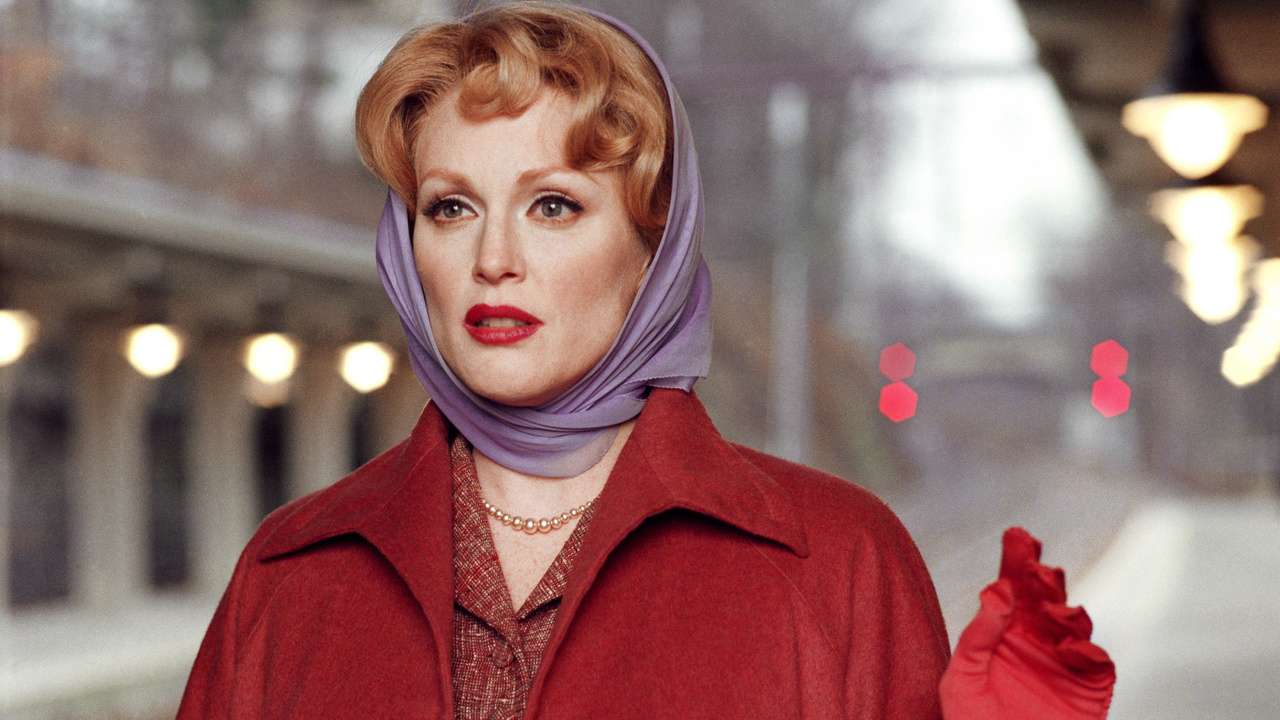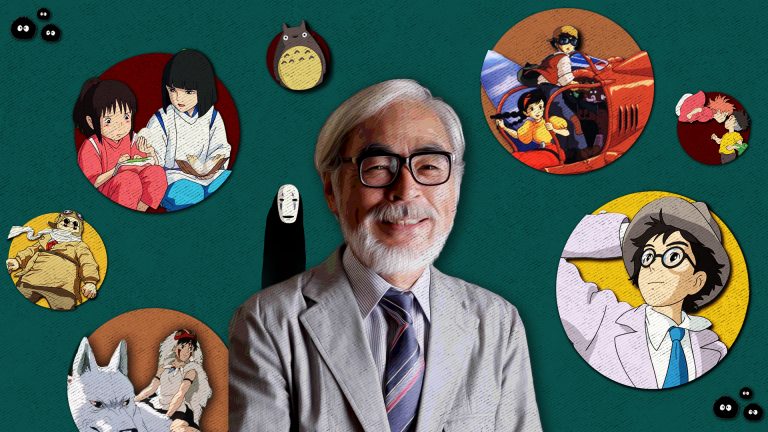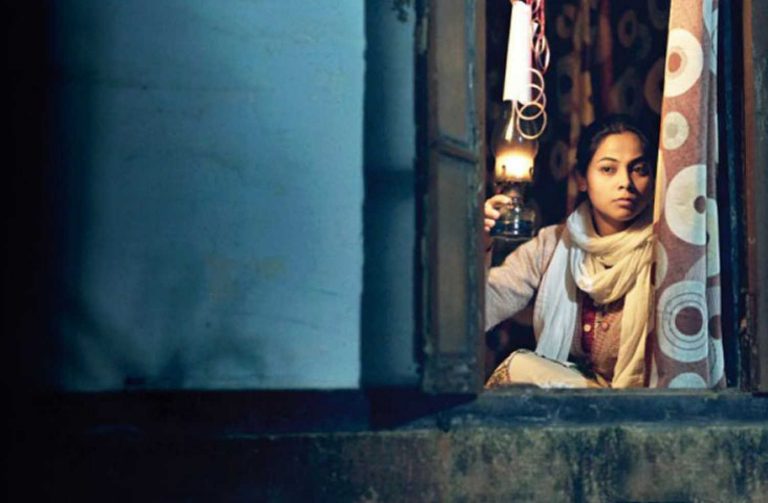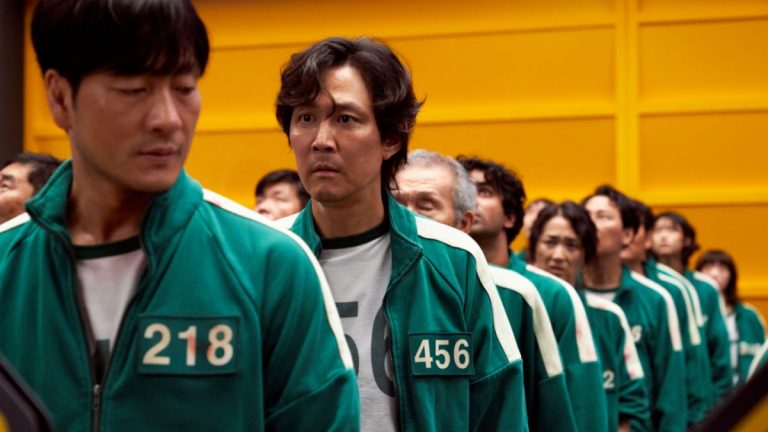30 Movies featuring characters trying to escape the vicious cycle of Poverty: There is a saying by Samuel Johnson that poverty is a great enemy of human happiness; it certainly destroys liberty, and it makes some virtues unfeasible and others extremely difficult. The birth of Italian Neo-realism in cinema inspired a slew of great filmmakers from around the world to express themselves uniquely through world cinema about the travails of the working class. Some of the greatest films ever made revolve around characters surviving in poor neighborhoods, families, or society. These characters are desperate to break the cycle of misery and poverty that has been a part of their identity for generations. They refuse to accept their fate at birth and instead strive to overcome it in order to grow and achieve genuine happiness.
These films focus on their struggle and survival instincts, which they use to manipulate their fate through fair or foul means. Some of them succeed, while others remain in turmoil and reach rock bottom. The most significant Italian Neo- realist classics include ‘Rome Open City’ (1945) ‘Bicycle Thieves’ (1948), ‘La Strada’ (1954), ‘Mamma Roma’ (1962), and ‘Padre Padrone’ (1977) depict the sufferings that arise from poverty and injustice. Then, there are contemporary films like ‘Minari’ (2020) and ‘Everything, Everywhere All At Once’ (2022), which portray the resilience of a working-class Southeast Asian family struggling to chase the American dream with more optimism.
Below is a list of some of the best indie and commercial films dealing with the struggle of the working class. Some of them are significantly inspired by neo-realist cinema.
1. Bicycle Thieves (1948)
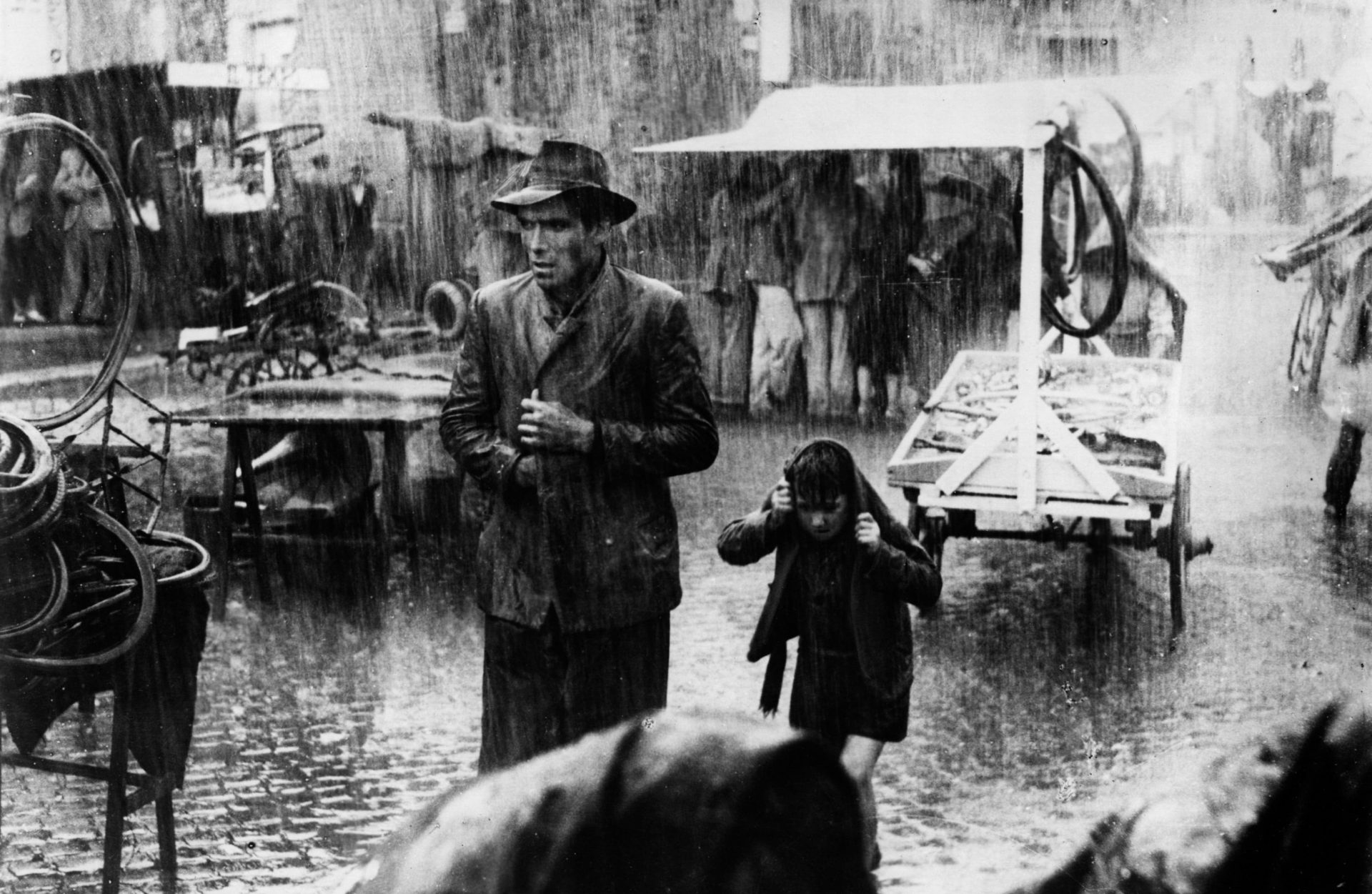
Bicycle Thieves is one of the landmark films of the Italian neorealism movement that happened amidst the mass unemployment in Italy after WWII. It’s a simple fable of a modest man named Antonio Ricci who has just attained the job of pasting film posters around Rome. The only problem is he doesn’t have a bicycle. However, his wife pawns their bedsheets for some cash to buy a bicycle. Alas, his bicycle gets stolen. Antonio doesn’t give up easily. He takes the help of the police but fails.
While on the lookout for his original bike in the theft market, where several bike snatchers sell the bike for pieces, Antonio gets several opportunities to manipulate his own truth and take away any bike. But he tries to keep his morality intact throughout the film. Sadly, in the end, poverty and despair push Antonio to steal a random bike. He gets caught and humiliated by a crowd of people in front of his kid. Sica’s depiction of humiliation and loss of dignity is more tragic than the horrors of Poverty. The loss of self-respect and integrity remains the ultimate tragedy of the film, where morality seems like a privilege. As a result, the poor are trapped in a labyrinth of poverty.
Also Read: Shoeshine [1946] Review – De Sica’s Somber Classic on Social Systems of Prejudice and Oppression
2. Do Beegha Zamin (1953)
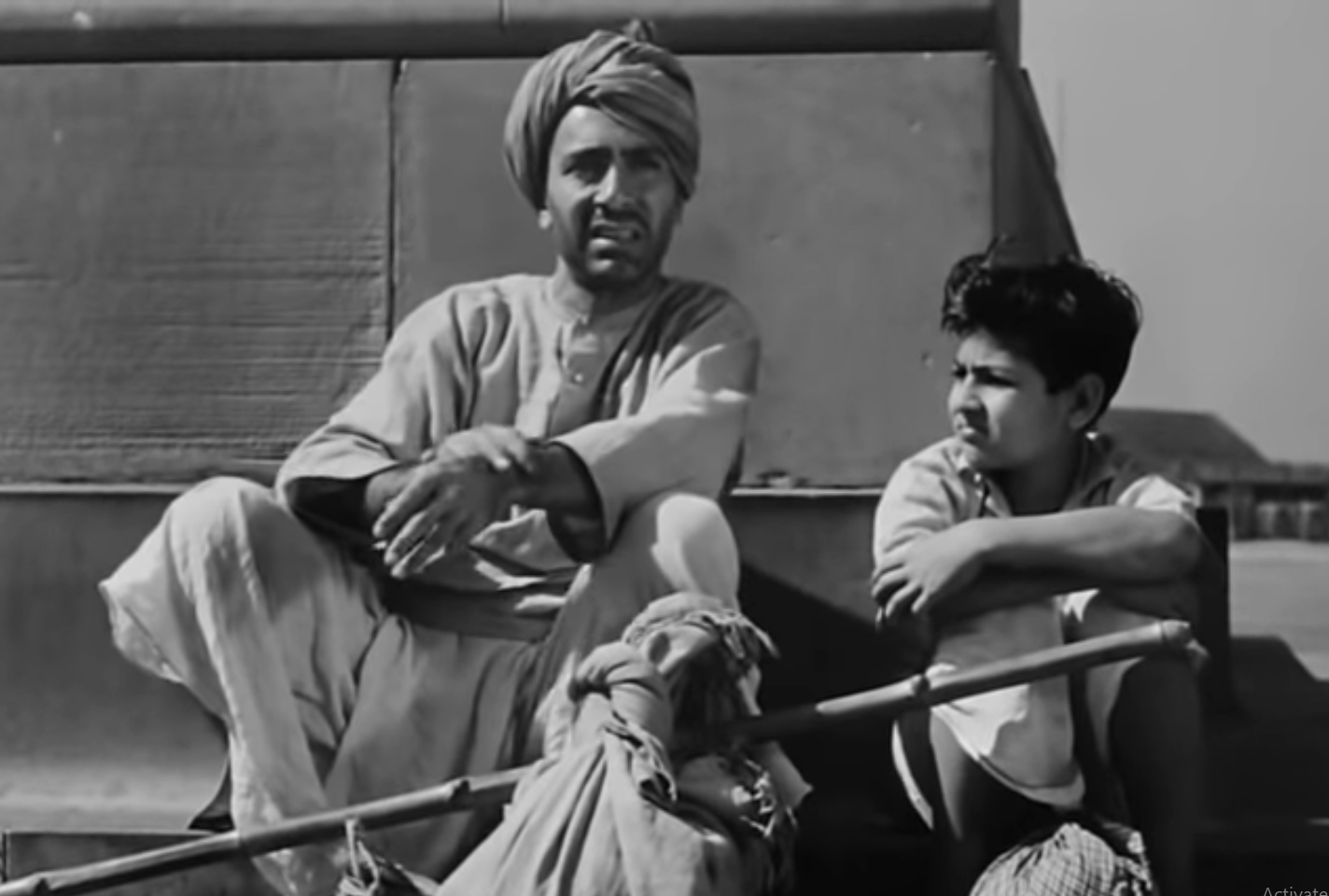
Vittorio De Sica’s Bicycle Thieves inspired Bimal Roy’s 1953 neorealist classic. However, Roy authentically captures the plight of Indian farmers caught in the trap of transitioning from rural life into a modern capitalist world. The atrocities of zamindars make debt traps, and the corrupt legal system supports the rich, whereas the poor drown in debt for generations. Roy’s protagonist Shambhu is a simple, naïve farmer who just wants to live a content life with dignity and hard work. Shambhu worships the soil of his land and considers it a big asset for his successors. He eventually gets entangled in the politics of powerful zamindars who want to sell his land to build a mill.
A helpless and illiterate Shambhu gets intimidated by a series of legal protocols. He agrees to arrange money in a given period of time. Shambhu sees a ray of hope for earning money in a big city full of opportunities, Calcutta. However, the wicked people of the city frequently fool Shambhu and Kanhaiya. Here the absence of morality is a survival tactic. The social realism created by Bimal Roy has no silver lining that the protagonist longs for till the end. The tyranny of the class system makes it difficult for an individual to rise up from generational poverty.
3. The Apu Trilogy (1955 – 59)
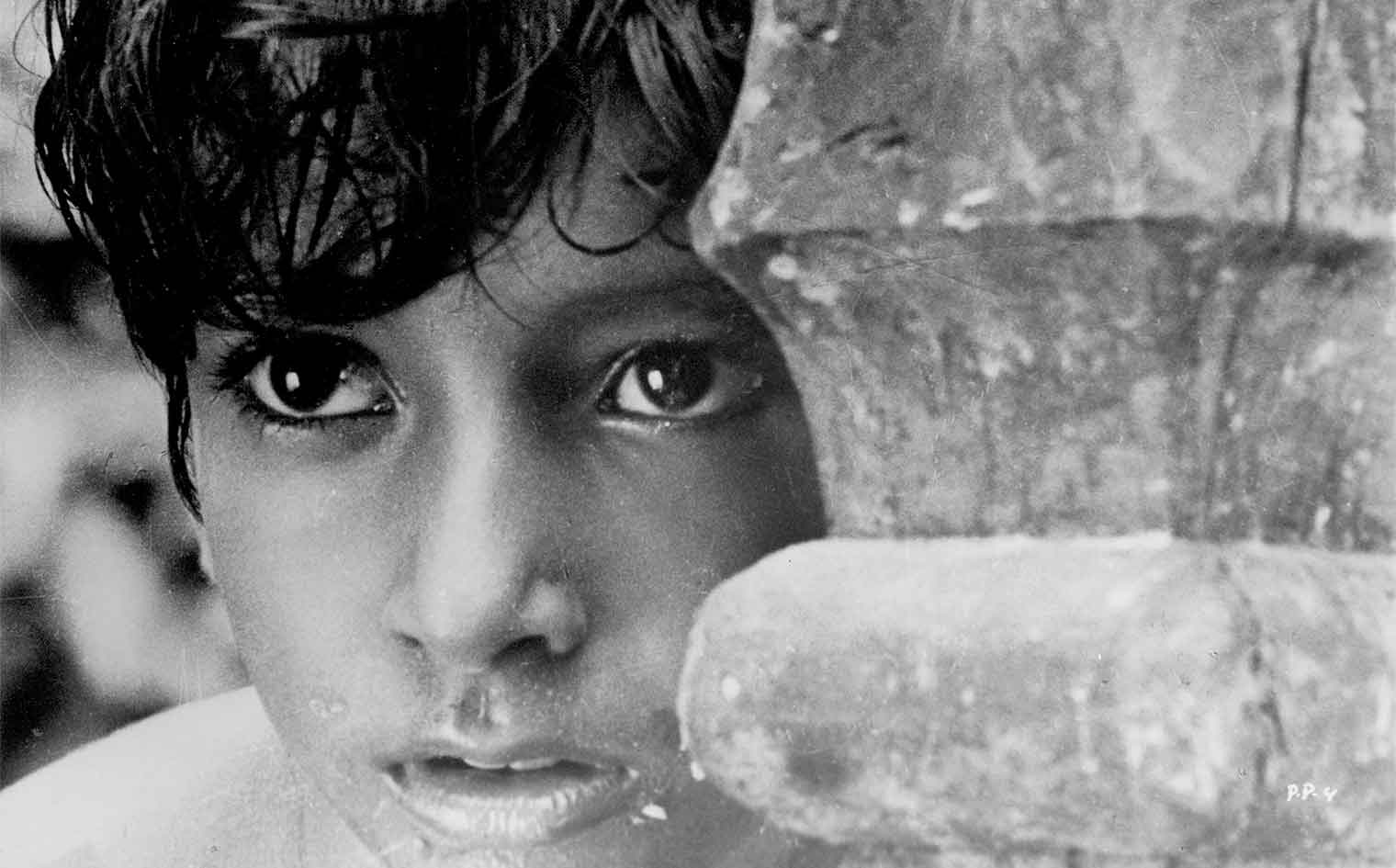
Satyajit Ray’s minimalist tale of a poverty-stricken family greatly impacted World Cinema. The mundane depiction of a working-class family has inspired Persian directors like Majid Majidi and Abbas Kiarostami. The trilogy revolves around a boy named Apu who belongs to a family that has enjoyed generational wealth but can no longer deal with the circumstantial poverty. His father is a priest by profession but fails to make a living. His parents are too adamant about asking for any help from neighbors or relatives due to their pride.
A tragedy always follows Apu’s search for a silver lining or a new beginning in the form of a death of a closed one. The loss of his grandmother, his sister, father, mother, and wife is directly or indirectly linked to their financial condition. His ill sister dies without any treatment due to his stubborn parents. His father falls ill and collapses, leaving him and his mother to earn for themselves. As Apu got busy with studies in the daytime and working for the printing press at night time, he lost touch with his mother. His mother falls into depression out of loneliness, and she dies too. After his wife dies, Apu wanders off into oblivion, leaving behind his son with the same fate.
Related to Movies about the Vicious Cycle of Poverty: The 15 Best Movies About the Working Class
4. Pixote (1980)
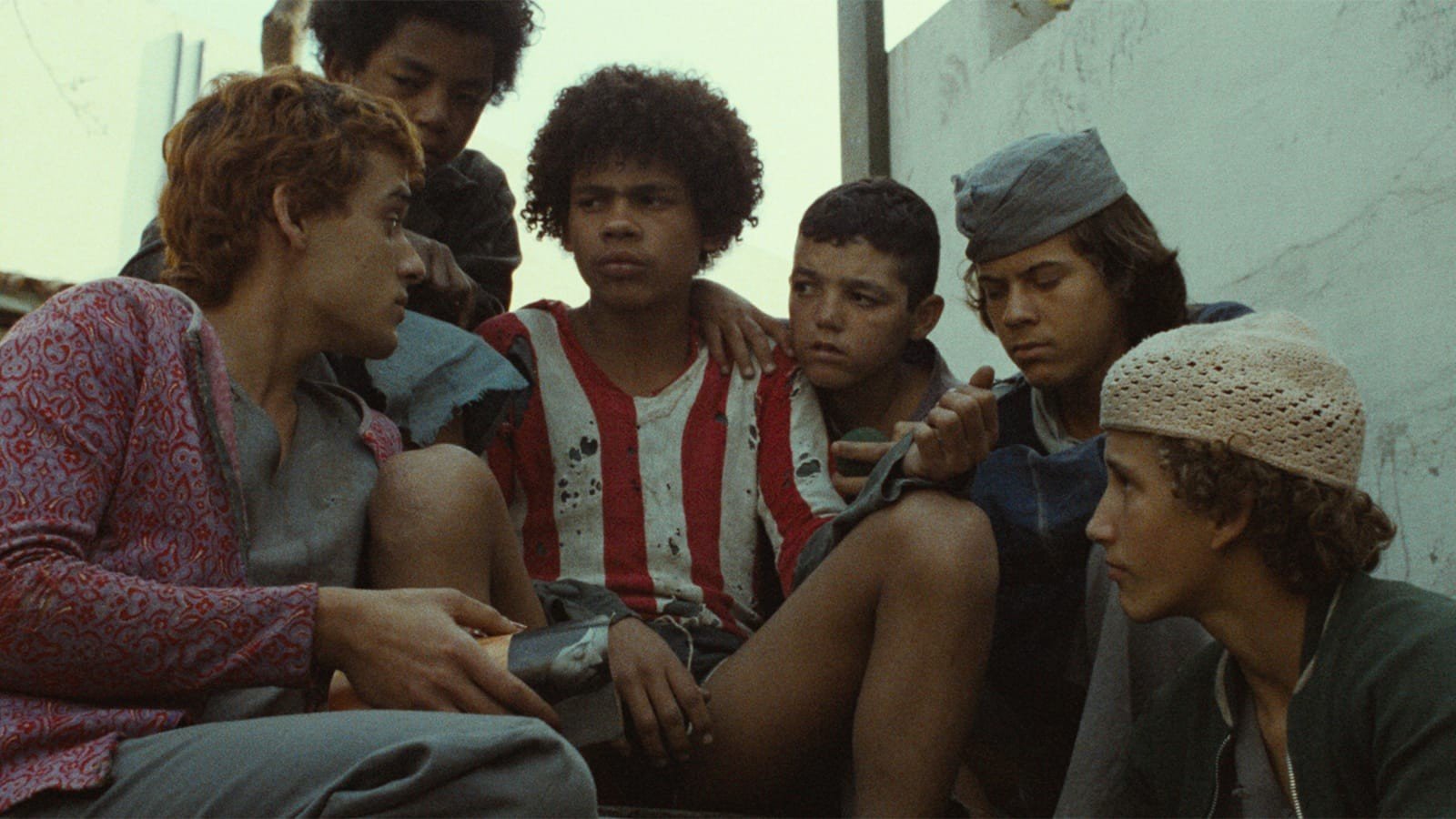
The titular character Pixote in Hector Babenco’s Pixote is a juxtaposition of millions of poor kids trapped in the prison of the corrupt system, drugs, prostitution, and crime on the streets of Brazil. Pixote allies with other delinquents to survive the rape and bullying by his older mates in a reformatory, where he gets admitted. These juvenile delinquents are often harassed and killed by corrupt officers in mass shootouts. Babenco’s atrocious adult character outshines the few ethical and honest officials who initially give hope as a heroic savior figure for the children but prove ineffective.
Pixote breaks out with his fellow friends into the outside world to escape the horrors of the facility, but the outside world turns out to be more oppressive and volatile for him. His fellow mates get killed in mass shootouts, sexual abuse, and gun violence. Their existence seems invaluable, as they get easily forgotten, like a fly in the air, leaving him alone to face an uncertain and tragic future. In the City of God – another Brazilian film set in the favelas – the characters have the power to act with planning and politics. But in Pixote, the characters are victims of the system and behave out of impulses, innocence, and pressure.
5. The Color Purple (1985)
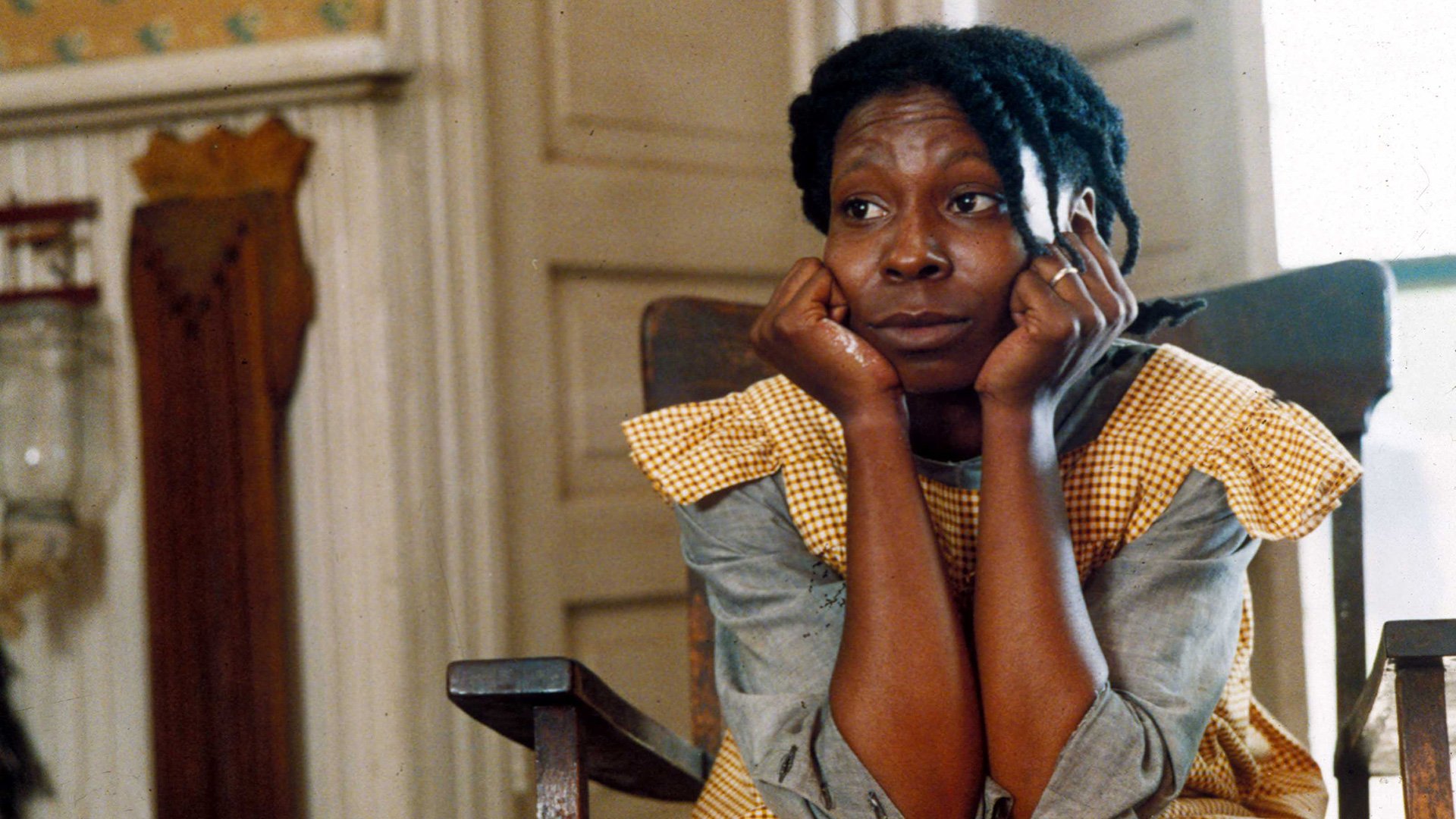
The Color Purple is an impactful tale of sisterhood and an exemplary prognosis of how the female dynamic becomes stronger through shared atrocities. Set in early twentieth-century America, the narrative depicts how black women faced internalized racism apart from the struggles of slavery, white superiority, and women’s rights. Celie, who has been pitted by her fate time and again, grows up to be a submissive and timid woman. She gets sexually abused by her father and then sold to a much older abusive man with kids. She only gets away from the horror by spending time with her sister Nettie. Both sisters bond through shared trauma but get separated when Celie gets married.
Celie’s ideology about womanhood develops to accept the constant abuses from her husband. She tries to politely impose this ideology on her rebellious stepdaughter-in-law Sofia who refuses to accept the dominance of her husband, Harpe. Celie secretly admires Sofia’s courage in standing up for herself. Shrug Avery introduces her to a new perspective of love, romance, tenderness, liberation, self-love, and god. In Spielberg’s classic, Celie stands up for herself in the end and finally leaves her husband’s house to pursue her dreams.
6. Salaam Bombay (1988)
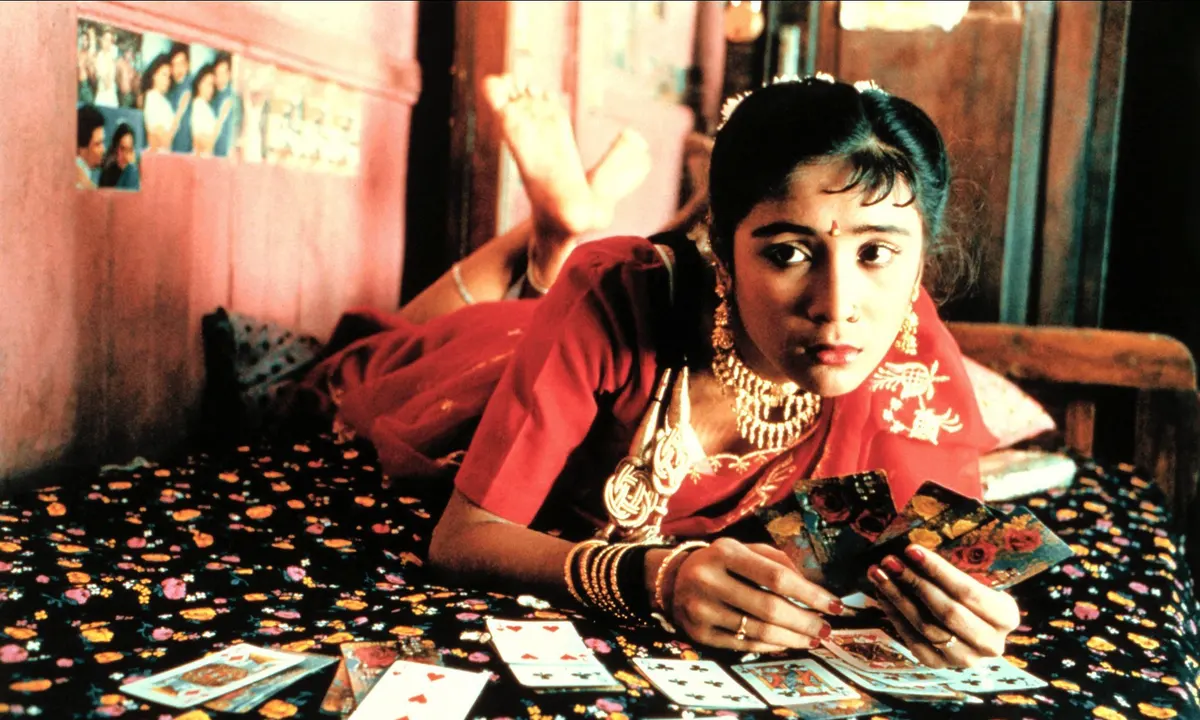
Mira Nair’s neo-realistic classic revolves around a village kid named Krisna, who works as a peon in a local circus away from his home. After being abandoned by them, he takes a train to the ‘city with bright lights’ called Bombay. The ticket collector tells him to go and come back as a hero (addressing the country’s obsession with popular cinema, which makes and breaks dreams every day). He gets a job as a tea server near a brothel and saves money to return to his hometown. The existence of these kids is of sheer significance as they are addressed with a new name every now and then. Krishna gets his new name Chaipau and meets an old stoner companion called Chillum.
Chillum horrifies Chaipau as he tells him about the “ghosts” of the dead street children wandering at night. Thus, adding sheer significance to their existence. At the brothel, Krishna falls for solah saal ( a new teen prostitute). He befriends Manju (the daughter of a prostitute and her pimp Baba). Krishna slowly drowns in the cosmopolitan maze as he keeps running from the pimp, the wedding, the police, the shelter, and then again from the brothel. Thus, he slowly turns out to be on the path of becoming one of the “ghosts.”
Also, Read: Every Mira Nair Film Ranked
7. Bandit Queen (1994)
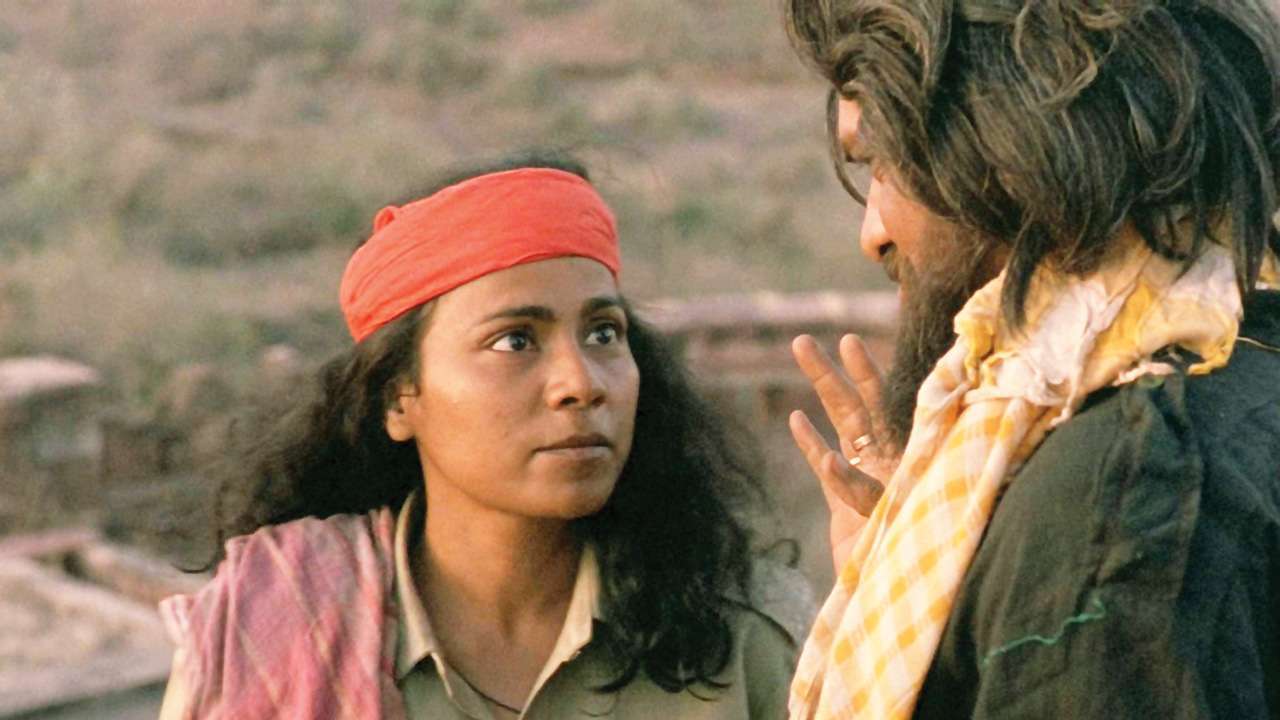
Shekhar Kapur’s Bandit Queen remains one of the most gut-wrenching and controversial pieces of Indian cinema, displaying a raw, unfiltered gaze. It is based on a female dacoit Phoolan Devi who lived a rebellious life in the interiors of India, where sexism, casteism, and corruption are very common. The outrage of Phoolan Devi as an outlaw is due to the humiliations and abuse she went through. Phoolan kept on running from her in-law’s house – where she was married to a pedophilic 30-year-old man – to her house, which refused to accept her after her divorce. The dacoits finally captured her, and she slowly rose to power until she surrendered before the government. She was infamous for her Robin Hood-like persona, who made sure that none of her subordinates harassed women or a kid.
Her tough exterior resulted from the repeated abuse, but she was still sympathetic to those experiencing similar pain. She rises to the top as a hero to represent the plight of the less powerful. When Phoolan Devi surrendered, she had already inspired and shocked millions around the world as a village woman belonging to an oppressed caste who dared to live a life on her own terms.
8. Made in Hong Kong (1997)
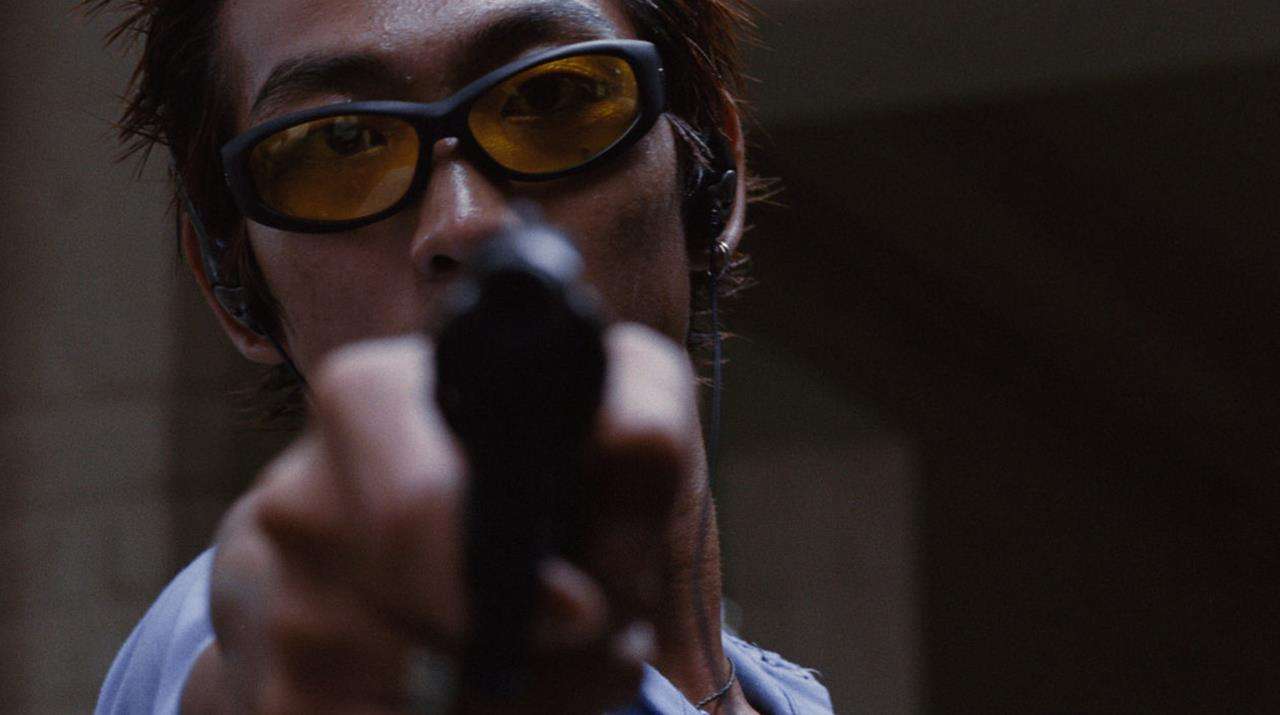
In Made in Hong Kong, the protagonist, Autumn Moon’s life, is limited to wandering around claustrophobic, high-rise buildings collecting debt from random tenants as he works for a local triad (China’s criminal organization). Autumn Moon is a school dropout who is abandoned by his father and later by his mother. His father abandoned him and started another family with a new woman. His mother considers him a liability and finally gives up too. He hangs around with a mentally-challenged orphan Sylvester. There is a commentary on Hong Kong’s urban alienation and extremely competitive lifestyle.
Autumn Moon’s future seems uncertain. He has no financial backing to continue his studies. He is dependent on a criminal expedition for money which he struggles to finish. Therefore, Poverty does beget evil as it makes him carry out dangerous delinquencies. Despite the elements of nihilism, Moon sees a ray of hope when he gets the suicide letter of a dead girl and meets Ping (the daughter of one of his debtors). After Ping’s death due to a loophole in the healthcare system, Moon’s sudden spurt of ‘Hope’ gradually shifts to cynicism. Thus, the character’s attempt to experience existentialism could not skip the vicious cycle of poverty and misery.
9. Rosetta (1999)

A teenage girl named Rosetta, who lives in a rented trailer park on the fringes of Belgium, is responsible for caring for both herself and her drug-addicted mother. Due to her difficult living conditions, she grew up to develop a tough exterior to survive in the brutal world. Rosetta aspires to live a life with self-respect and dignity. She is determined to find employment to support herself without relying on the mercy of others. She does not want to end up like her mother. Dardennes’ film depicts a powerful urge for independence through financial liberation in order to sustain a simple life. Rosetta’s aspiration is limited to attaining normalcy and finding a decent job.
She wants to earn money with dignity but is ready to compromise her integrity, as it is an absolute privilege to keep your morality intact in abject poverty. Thus, Rosetta represents the millions of people who could sabotage a close friend or associate to move up the capitalist ladder. She deceives her good friend Riquet to take up his job at the waffle stand. Eventually, Rosetta chooses to accept her reality and fight it.
Related to Movies about the Vicious Cycle of Poverty: 20 Most Anxiety-Inducing Movies of the 2010s Decade
10. Amores Perros (2000)
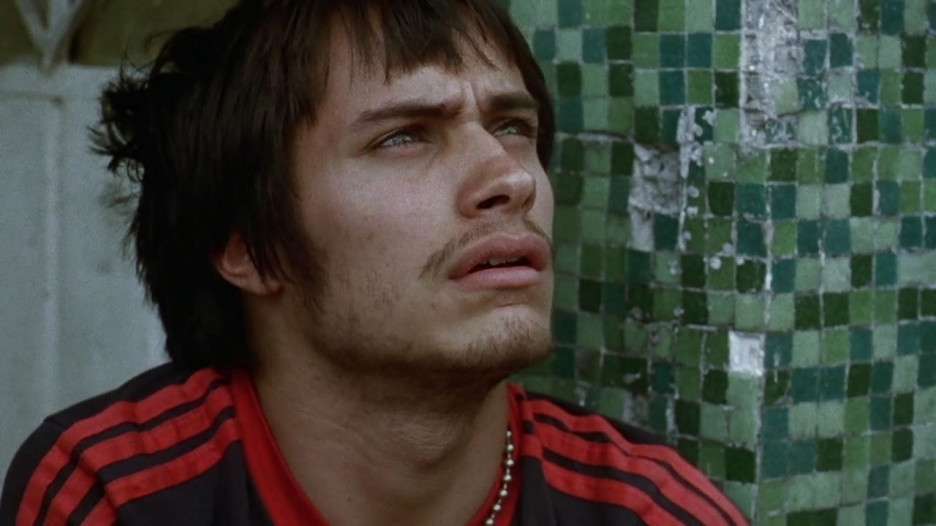
Alejandro Gonzalez Inarritu’s Amores Perros has had a significant and timeless influence on modern realist cinema. It’s an emotionally exhausting tale of complex human relationships beyond the class disparity of Mexico City. The story of Octavio and Susana represents the familiar working-class tales. Octavio has an illegitimate affair with his sister-in-law, Susana. In contrast to his violent brother Romiro, he promises to give her and the child a better existence. Romiro often gets involved in theft and robbery. The house is so small that one can easily listen to others’ private moments through the walls. Here, privacy is a privilege.
Desperate to elope with Susanna, Octavio finds a means to make more money. He bids his dog Cofi in gruesome, bloody fights (quite common in the interiors of Mexico) with all the heavyweights in the city. Nevertheless, Susana double-crosses Octavio and flees away with his money. In Amores Perros, there is no moral compass to understand the depths of betrayal and infidelity of the corrupted souls. Here, the criminals are neither romanticized, antagonized, nor stylized. They are depicted as products of their morally depraved environment, willing to do whatever it takes to manipulate morality to suit their own purposes. The characters, especially Octavio, are driven by love, jealousy, ambition, and rage.
11. City of God (2002)
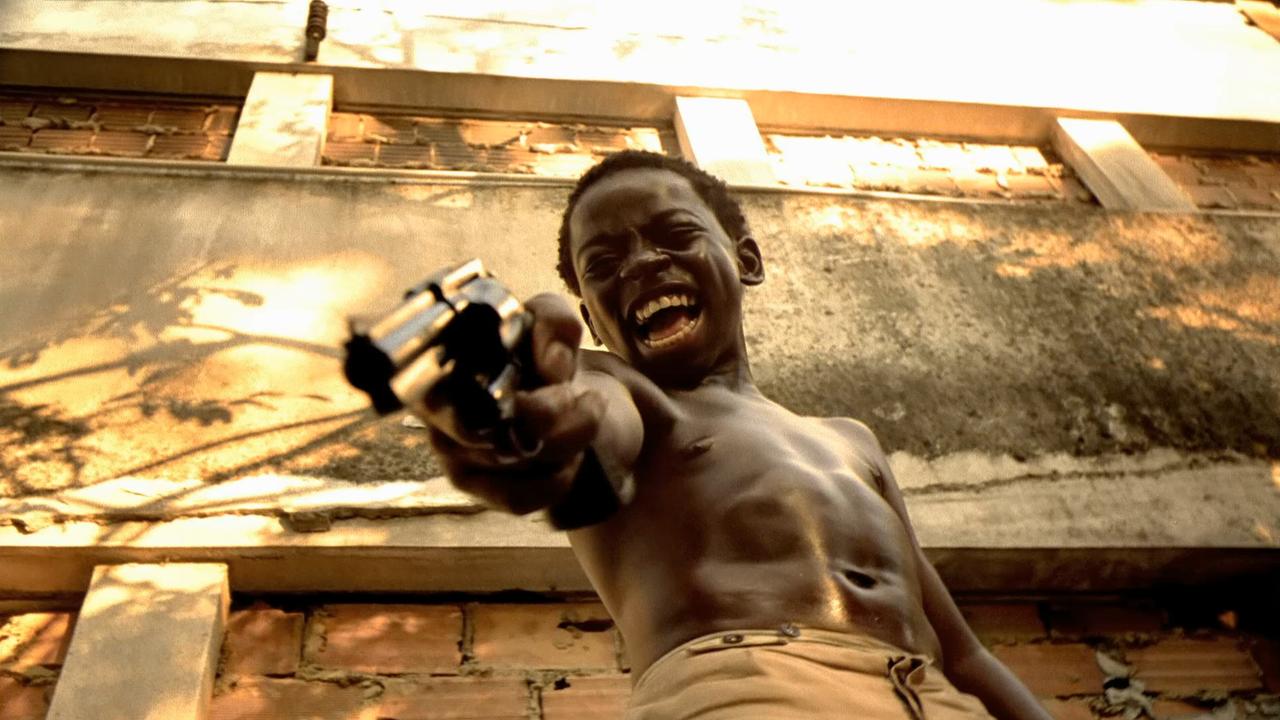
In the City of God, the narrator and the protagonist (Rocket) grow amidst gang rivalries, theft, and illegal drug cartels in the interiors of Rio De Janeiro favelas (slums). The narrator chooses to rise above the world of crime and poverty as he starts working in the local print press. But, to cover sensational news about Brazil’s most wanted drug dealers, Rocket often has to cross paths with his childhood friend, Dadinho, and the leader of Brazil’s notorious criminal gang.
Dadinho is a power-hungry goon who has lived and learned the drug trade since childhood. He is now ruling the slums by fear and domination, where the life expectancy doesn’t even reach 30. His longtime friend and partner (Benny) eventually want to leave all of it for a simple and modest life with his girlfriend, Angelica. Rocket has seen how poverty and crime have engulfed most of his friends and acquaintances. He grew up to become wise enough to separate himself from that kind of world, only to be thrown in that often by his content-hungry workplace superiors. Rocket has to go back to the same narrow lanes of his shabby locality to cover sensational news for his boss.
12. Lilya 4 Ever (2002)

Lukas Moodysson’s nihilistic film on child abandonment is a testament to a tired soul trying to find light amidst the darkness of despair. Lilya lives in a shabby public housing system in eastern Europe and plans to move away with her mother until she gets abandoned by her. Left at the mercy of her aunt, she is transferred to a filthy little apartment and stops getting the monthly expenses from her after a few months. In Lilya 4 ever, the protagonist puts faith in the wrong people and constantly gets deceived; by her friend, her mother, her aunt, and all her male acquaintances in the neighborhood.
To make ends meet, she helplessly capitalizes on her youthful asset. She bonds well with Volodya, who is also abandoned by his abusive father. They connect through a sense of shared oppression and escape from the heartbreaking reality through sniffing glues. Lilya again dares to trust the too-good-to-be-true Andrei. Although cautioned by Volodya, she still sees a way to escape from the prison of poverty by taking the last chance. She gets conned into an international prostitution racket in Sweden. Her soul finally breaks free from this life through death. Moodysson’s depiction of women being manipulated into international human trafficking is universal in its social realism.
13. Homeless to Harvard (2003)
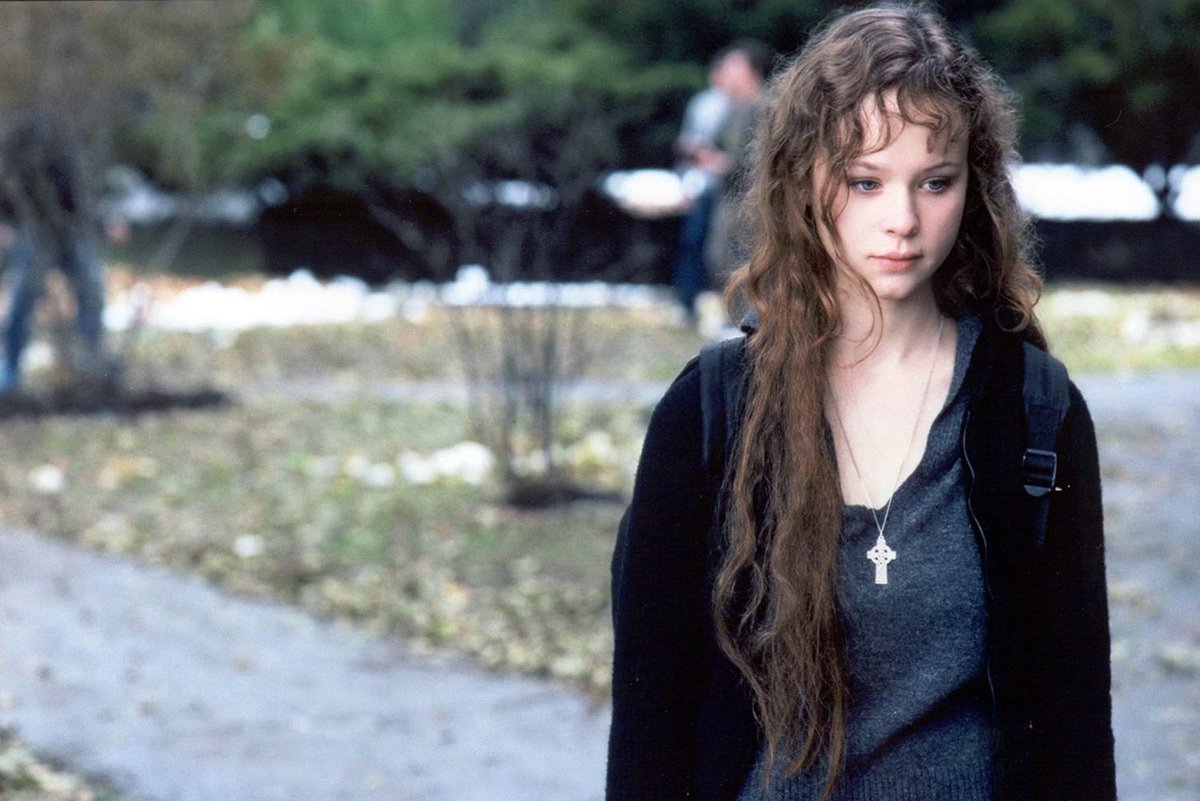
Homeless to Harvard is a real-life inspirational story of self-belief. Liz Murray grew up in a highly dysfunctional family with two drug-addict parents. Liz and her sister were left to feed themselves. As a result, she was highly malnourished and often bullied by her classmates. But, her teachers noticed her exceptional intelligence. She was shifted to a homeless shelter. Her extremely bad experience in the shelter forced her to run away to the streets. At 15, she was homeless, begging around to survive.
Despite all the shortcomings, Liz still deeply loved and respected her incompetent parents, especially her mother. Her mother’s unfortunate circumstances were a huge slap in the face because she did not want to inherit her mother’s errors. She finally took control of her fate, admitted herself into a public school, and relentlessly studied for Harvard while doing odd jobs. Eventually, Liz’s perseverance, hard work, and sincerity earned her a scholarship. Although the film is inspirational for several homeless American teens, However, Liz’s case was exceptional. She possessed prodigious intelligence, self-awareness, and self-discipline, enabling her to escape the poverty many of the poor aren’t blessed with.
Related Read: Lift [2022]: ‘Tribeca’ Review – Inspiring Journeys from the Homeless Shelter to the Ballet Stage
14. Monster (2003)
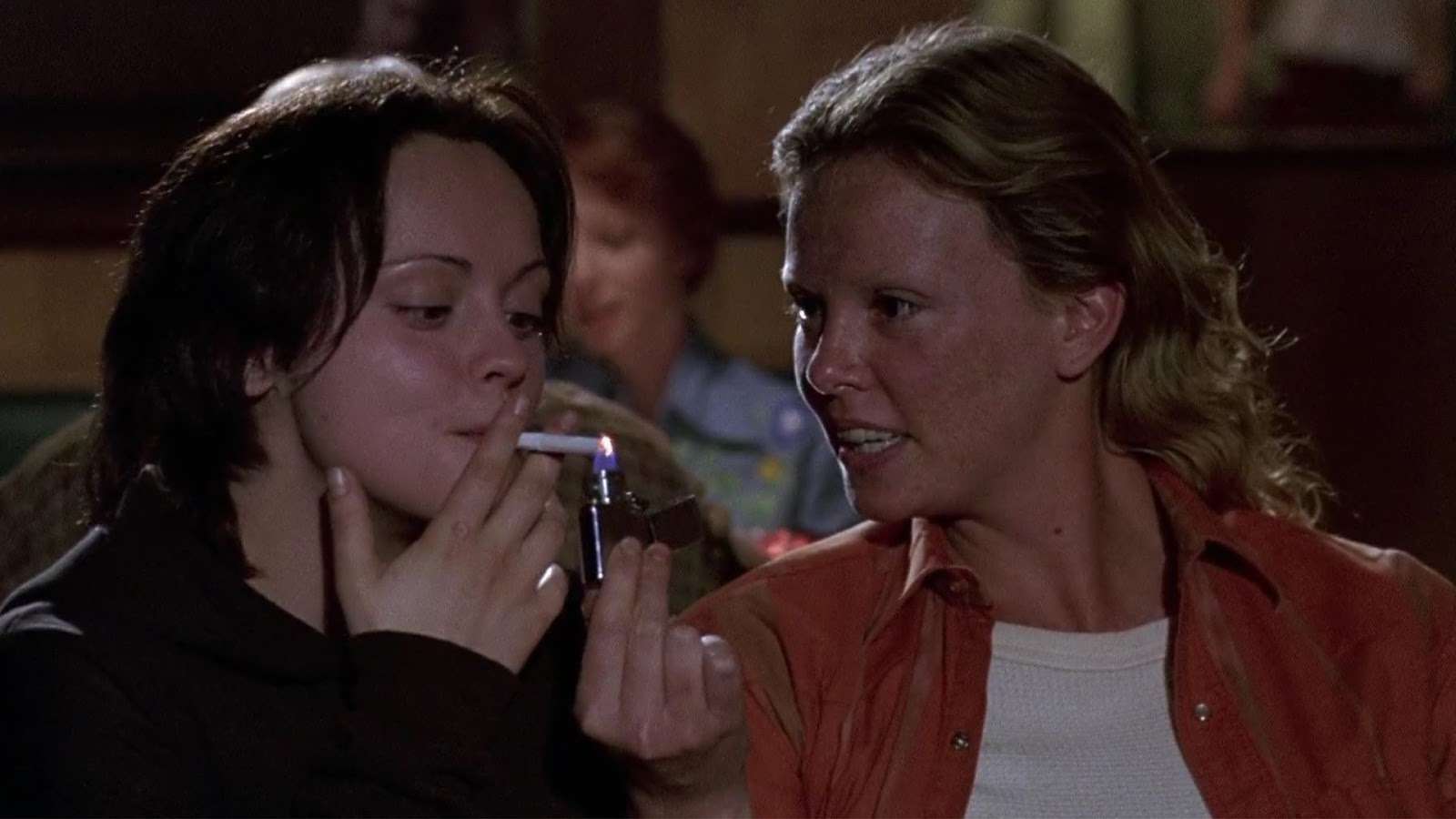
Monster is based on the life of Aileen Wuornos (popularly termed “America’s first female serial killer”). It is a character-driven film in which Patty Jenkins humanizes Aileen’s circumstantial plight, who tries to escape her chain of tragedies but ultimately succumbs to a much larger maze of crime and sins. Jenkins portrays Aileen as a woman who has suffered abuse and abandonment from her own family members and acquaintances. Hence, the filmmaker provides due context to her cold-blooded psychopathic tendencies. She became involved in prostitution at a young age. Aileen never experienced love and compassion. She had never had a goal in life until she met Selby (a young confused teen).
The arrival of Selby instilled a sense of ‘hope’ in Aileen amidst all the suicidal thoughts, but she was unable to find a new job. This time Aileen’s despise for men for all the humiliation, abuse, bullying, and harassment turns into rage. Society fails Aileen’s efforts to live a dignified life, leaving her helpless to revert to her vicious, tragic lifestyle. Jenkins’ film title is more of a question than a statement about whether Aileen is a monster or a victim of the circumstances she couldn’t escape because society let her down.
15. Million Dollar Baby (2004)
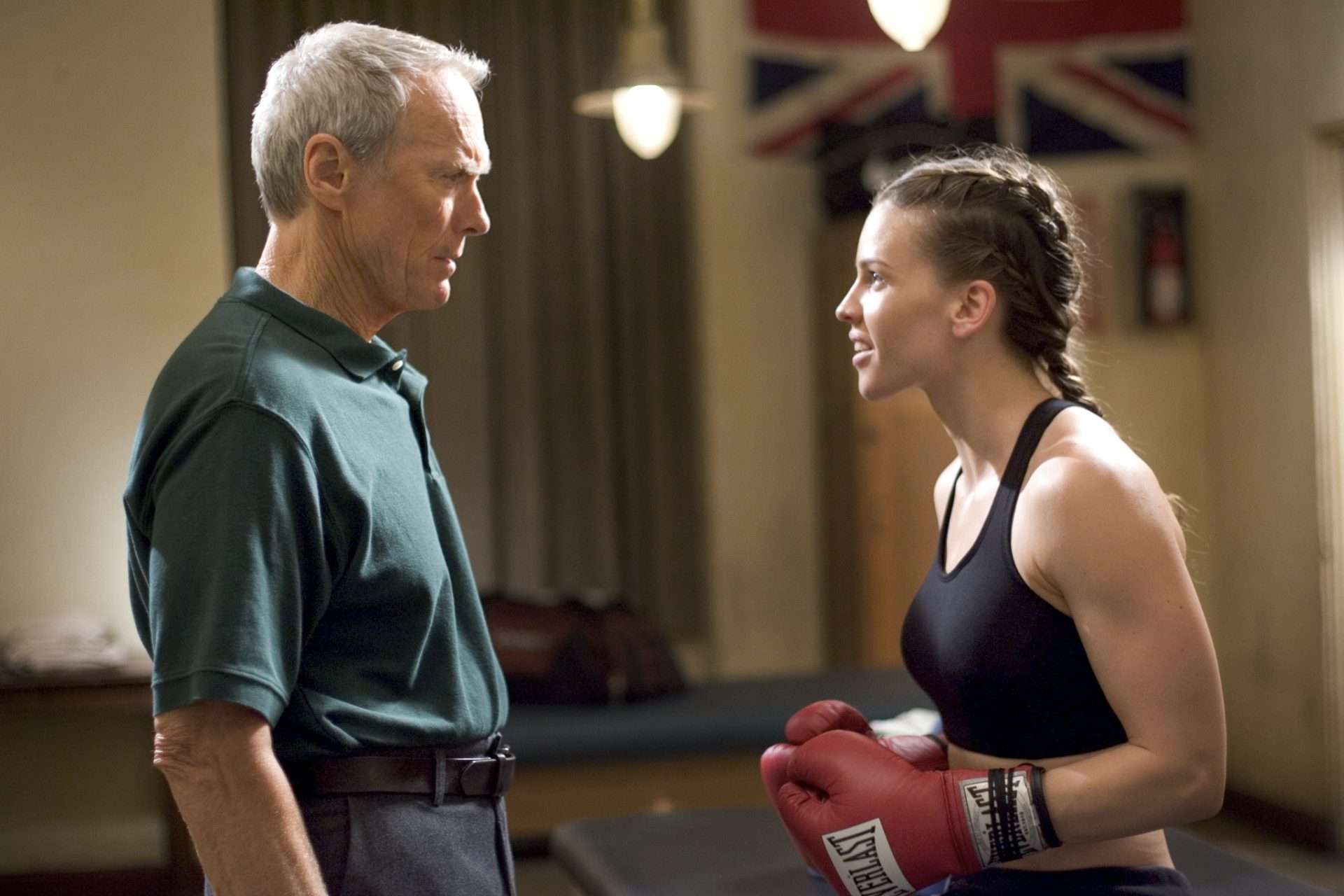
PHOTOGRAPHS TO BE USED SOLELY FOR ADVERTISING, PROMOTION, PUBLICITY OR REVIEWS OF THIS SPECIFIC MOTION PICTURE AND TO REMAIN THE PROPERTY OF THE STUDIO. NOT FOR SALE OR REDISTRIBUTION.
Maggie Fitzgerald of Million Dollar baby grows up to believe she is a failure. She has been hustling throughout her young life as a waitress. But decides to take a career risk and become a boxer at 31. She has a backup plan to settle in a trailer like the rest of her family. She somehow convinces the stubborn coach Frankie Dunn to teach her. Unlike a typical sports film that celebrates the main character’s victory after months of struggle, director Clint Eastwood explores the suffering and failure that comes after materialistic success. The deep-rooted characters are developed as individuals fighting their struggles for family and companionship.
Maggie is desperate to win her selfish mother and family’s love by financially supporting them. Maggie lost her father at a young age, and Frankie has a bitter relationship with his long-lost daughter, who sends back his letters. Eventually, both find a father-daughter-like figure in each other. Maggie falls so hard after achieving so much success in such a short period of time that she loses her will to struggle with life again. She begs Frankie to assist her in escaping this agony through death. Eastwood’s heavy sentimentalism weighs on the cynical nihilistic tone of the second half.
16. The Pursuit of Happyness (2006)

The Pursuit of Happyness is an African-American man’s restless quest for the American dream amidst the 80s economic recession in San Francisco. The film is based on the true life events of Chris Gardener, an aspiring salesman turned stockbroker. Initially, Chris’s risky financial decisions leave him with an overbearing amount of debt and unemployment, leading to the loss of his marriage, job, and house. However, Chris’s circumstantial poverty didn’t make him hopeless, and his optimism drove him to hustle harder with an unpaid internship. Muccino’s pursuit of happiness is not a neo-realist parable but rather an aspiring success story in which the character is unsatisfied with his salesman job for the rest of his life and desires more. He dreams of a life of luxury and prosperity without compromising on his ethics.
Chris keeps hustling harder with integrity, resilience, faith, and love. He creates a world of make-believe for his little son’s survival. The film’s silver lining is the small moments of happiness and Chris’ journey to receive his first big opportunity. Muccino does not overlook the magical element of luck and good timing, such as Chris’s first impressive meeting with the CEO before an important interview.
17. Wendy and Lucy (2008)
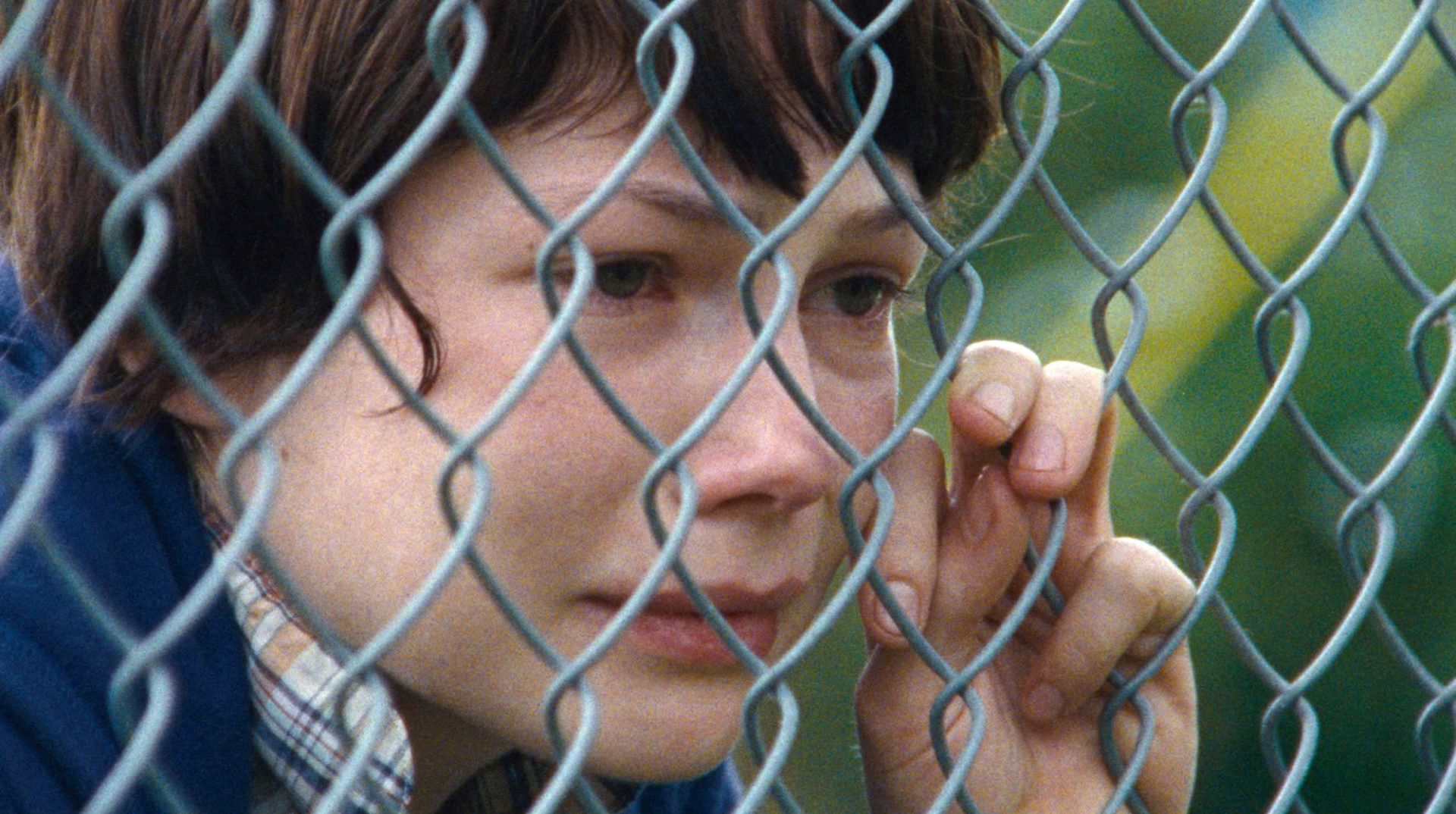
In Kelly Richardt’s Wendy and Lucy, the protagonist Wendy is a homeless young woman. When the car breaks down, she is at the mercy of an old town with dwindling resources. Wendy’s dream destination is to reach Alaska, where she assumes she can get a job that can earn her enough freedom (her version of the ‘American Dream’). While getting stranded in the scarcely populated town, Wendy crosses paths with ordinary individuals. Though these individuals are compassionate and helpful, circumstances drive Wendy to lose the little money she has saved. Moreover, she loses hope when losing her beloved dog, Lucy.
Poverty is neither a plan nor an option, it is an outcome of uncertain circumstances. Wendy’s fear of loneliness is more than losing out on her assets. In fact, she is more concerned about her companionship with Lucy. Her determination to find her outshines the fatigue of her soul lingering on her face. Kelly Richardt’s films deal with the ordinary lives of the American people, surviving in forgotten small towns.
Also, Read 10 Must-See Alternate Dog Movies
18. Slumdog Millionaire (2008)
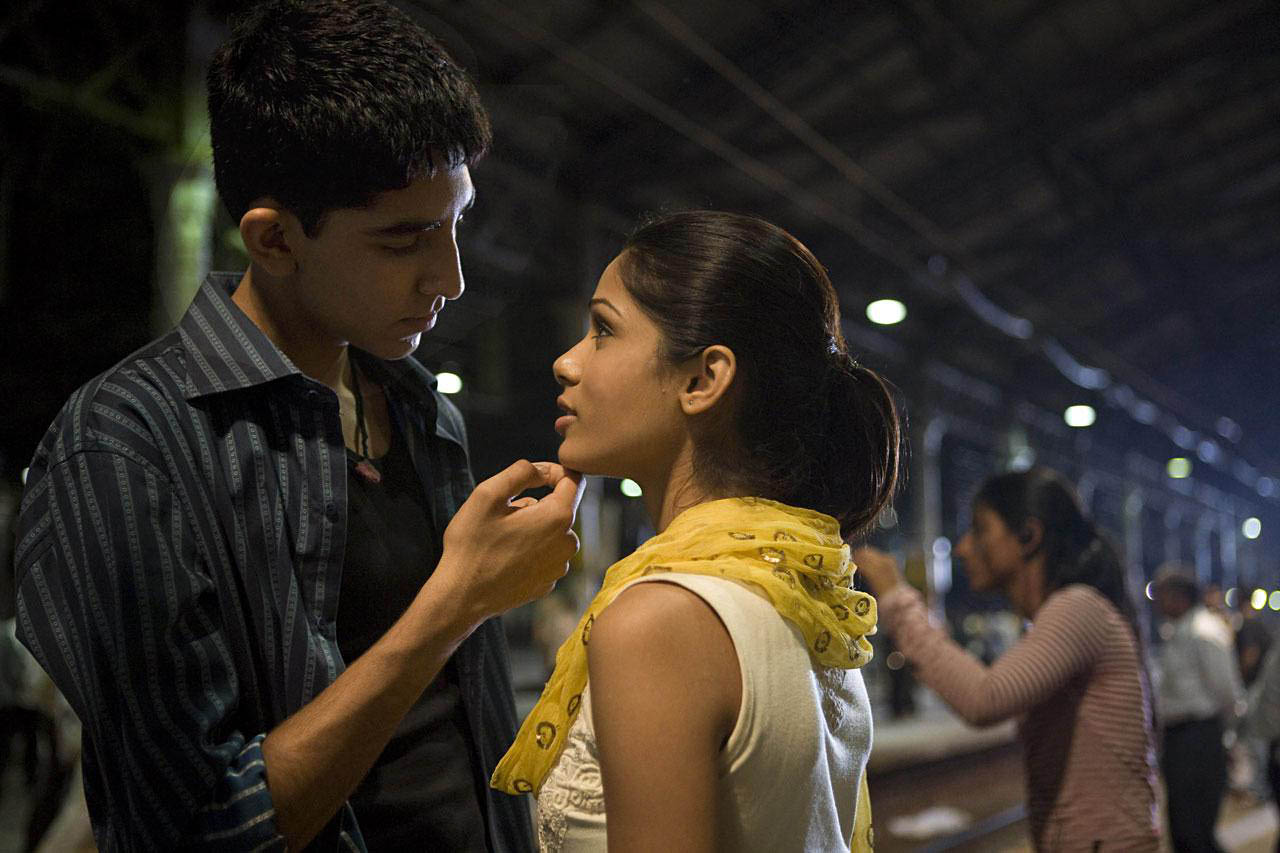
Slumdog Millionaire is an underdog’s quest for a better life with his childhood soulmate Latika. Danny Boyle captures the heart of Bombay (now Mumbai). A fairytale-like Oliver Twist fable where dreams do come true and where villains are a sellout power-hungry brother, the manipulative child traffickers, and the system in itself. Jamal, who has been impoverished and exposed to the harsh real world since childhood, has gained enough wisdom and intelligence from his surroundings to win a multi-million dollar reality show. Each question that’s asked in the show is somehow linked to a major incident in his life.
Danny Boyle’s perspective of these coincidences seems like a fantasy in the real world. The smug host’s initial excitement of a poor young guy bringing TRPs to the show transforms into anger and suspicion when they gradually move to the last question. Thus, in a country of underdogs, where only one percent of the world’s multi-millionaires live, people love to see rags-to-riches stories. Jamal’s Childhood companions Salim and Latika, choose power and money as they grow up and part ways. But Jamal chose a life of honesty and grew up to be a chaiwala at a call center.
Related to Movies about the Vicious Cycle of Poverty: All Danny Boyle Movies Ranked, From Worst to Best
19. Precious (2009)
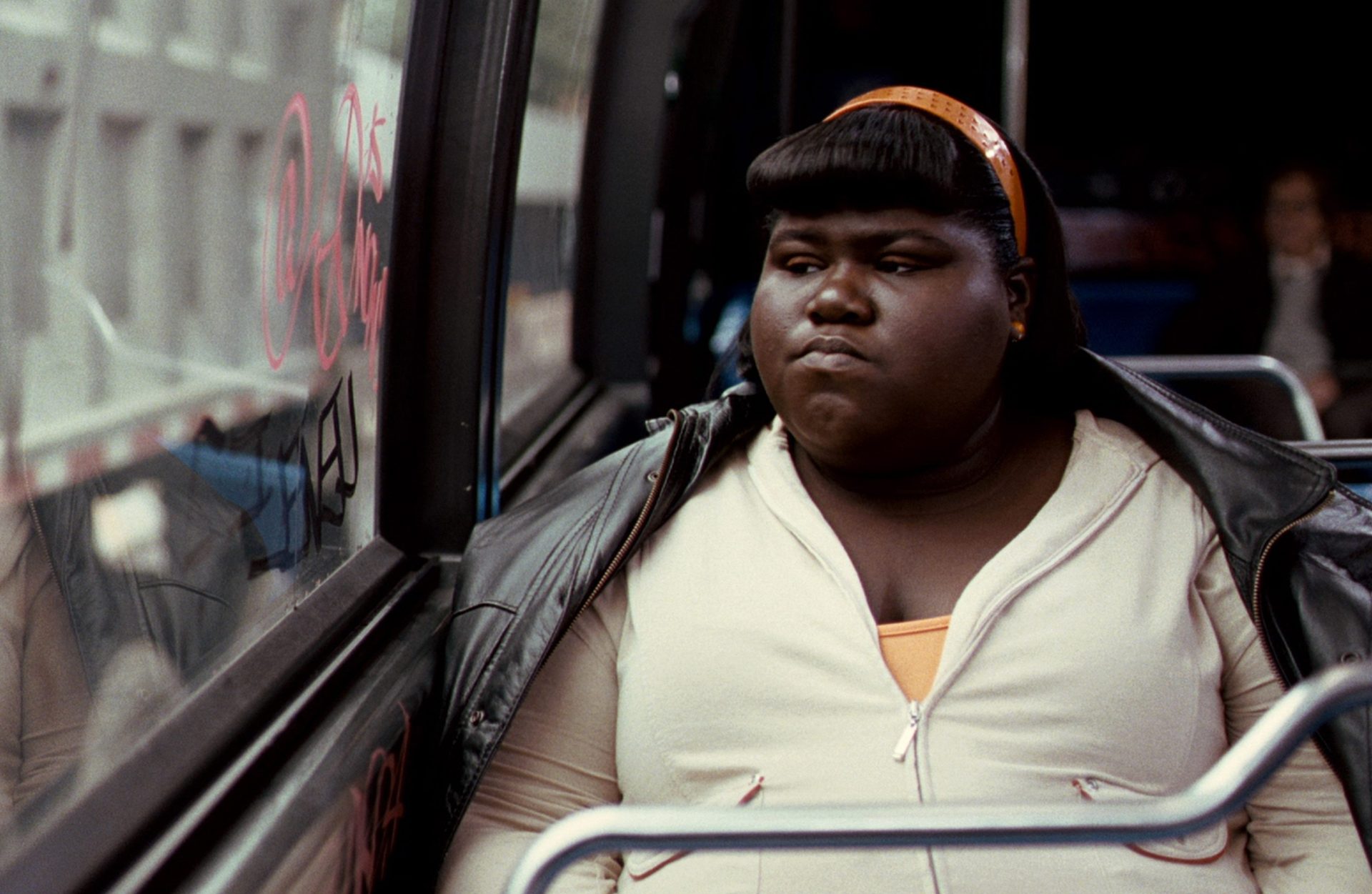
Lee Daniels’ Precious revolves around the title character, who is marginalized in more than one way by society. Precious suffers from obesity. She is illiterate, an African American woman who lives on welfare and has been constantly raped by her biological father. She has two kids, and one of them suffers from down syndrome. Precious is also subjected to mockery and verbal and physical abuse from her monstrous mother and fellow classmates. Precious is already at rock bottom from the beginning of the film. But, the ability to survive so much abuse and prejudices only makes her a fighter.
To live through all the pain and trauma, she escapes to a dream world created in her head where she is a supermodel, star, and celebrity. She lives inside her head, frequently walking the red carpet in order to feel happy or peaceful. Unlike many bleak working-class dramas, this has an element of hope in the form of some good people like Blue Rain (Precious’s teacher), Ms. Weiss (a social worker), and John (a nurse), who tries to anchor her to a better future. These loving, kind, and compassionate characters add color to Precious’s black-and-white life as she attempts to escape the rotten swamp where she will never bloom.
Also, Read: Black Girl [1966] – A Thoughtful Microcosmic Tale of Neocolonialism
20. Fish Tank (2009)
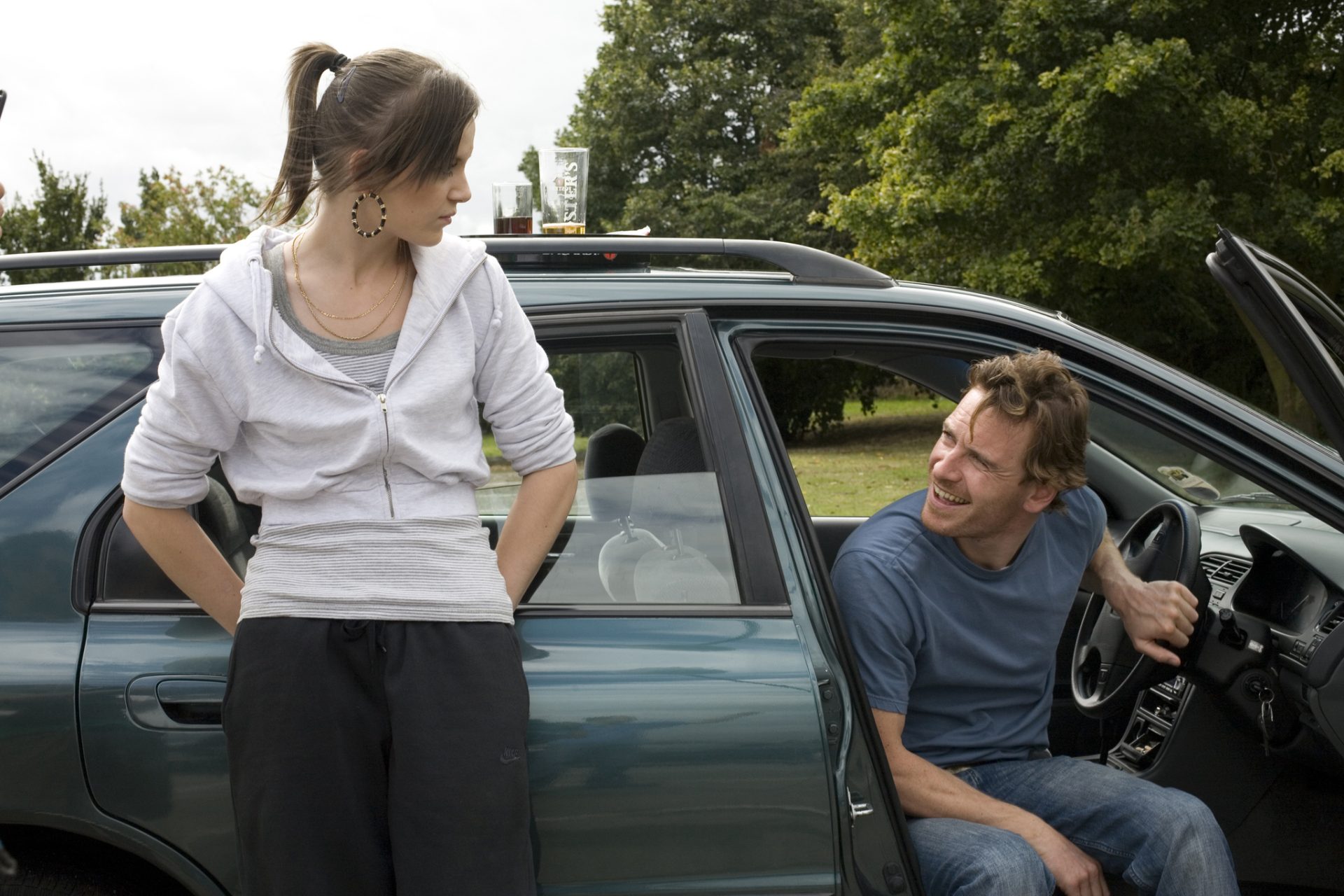
Mia’s world is confined within a British public housing system in Andrea Arnold’s Fish Tank, where she wanders around abandoned apartments, trailer parks, and grasslands. She lives with her irresponsible mother and young sister in a small apartment. There is a sense of frustration in her due to a lack of resources, terrible parenting, and poverty. Dance and music are the only sources of escapism for Mia. A dance audition for a local bar finally gives her an aim and hope to escape her stagnated lifestyle. Her crush on Conor (her mother’s new boyfriend) is a combination of an absent father figure and sexual attraction in her life.
The mix of curiosity, excitement, and angst pushes her to make mistakes. However, after Conor is exposed as a cheater, Mia is forced to face reality. She eventually fails the audition at the local bar but takes another alternative to move out of the city with Billy (her like-minded friend). Mia’s ultimate dream was to get out of her mundane life for growth and financial liberation. Thus, her first step to freedom is filled with uncertainty and happiness. Andrea Arnold’s portrait of teen despair culminates in a surprisingly optimistic hope and faith for a better future.
Related Read: Every Andrea Arnold Film Ranked
21. Mammoth (2009)
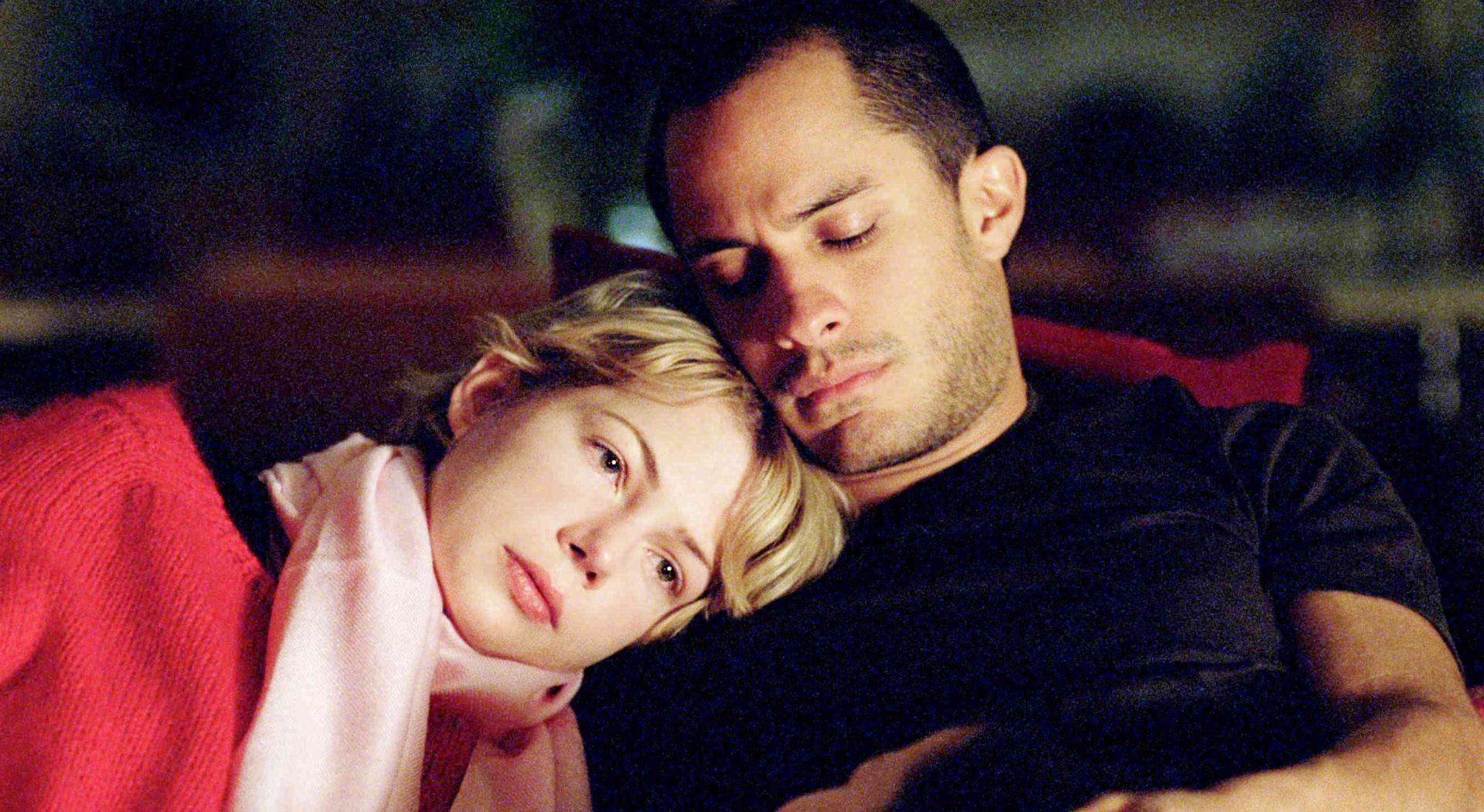
Mammoth is an emotional tale of parenthood struggles amidst global income inequality. Here, three stories from various walks of life are intertwined with contradictory situations caused by globalization and financial insecurity. Gloria is a Filipina woman who works as a nanny for a wealthy American child to provide a better life for her children, who live far away in their hometown. Her kids yearn for her and struggle to survive in a poor, unsafe environment. The American kid’s mother is a successful surgeon but rarely spends time with her own kid. Her husband, who is a video game designer, travels to Thailand for a business deal. He meets a pretty naïve hooker who is working to support her kid.
In the moment of infatuation, he promises her a better life and breaks her trust when he disappears the next morning. Lucas Moodyson comments on the subtle mistreatment and exploitation of marginalized ethnicities with a series of contrasts and irony. Despite their income disparities, all the characters are struggling to make a living to support their child but cannot spend enough time with them. As a result, it emphasizes the universality of hope and pain, which unites humanity regardless of race, class, or other differences.
22. The Kid With A Bike (2011)
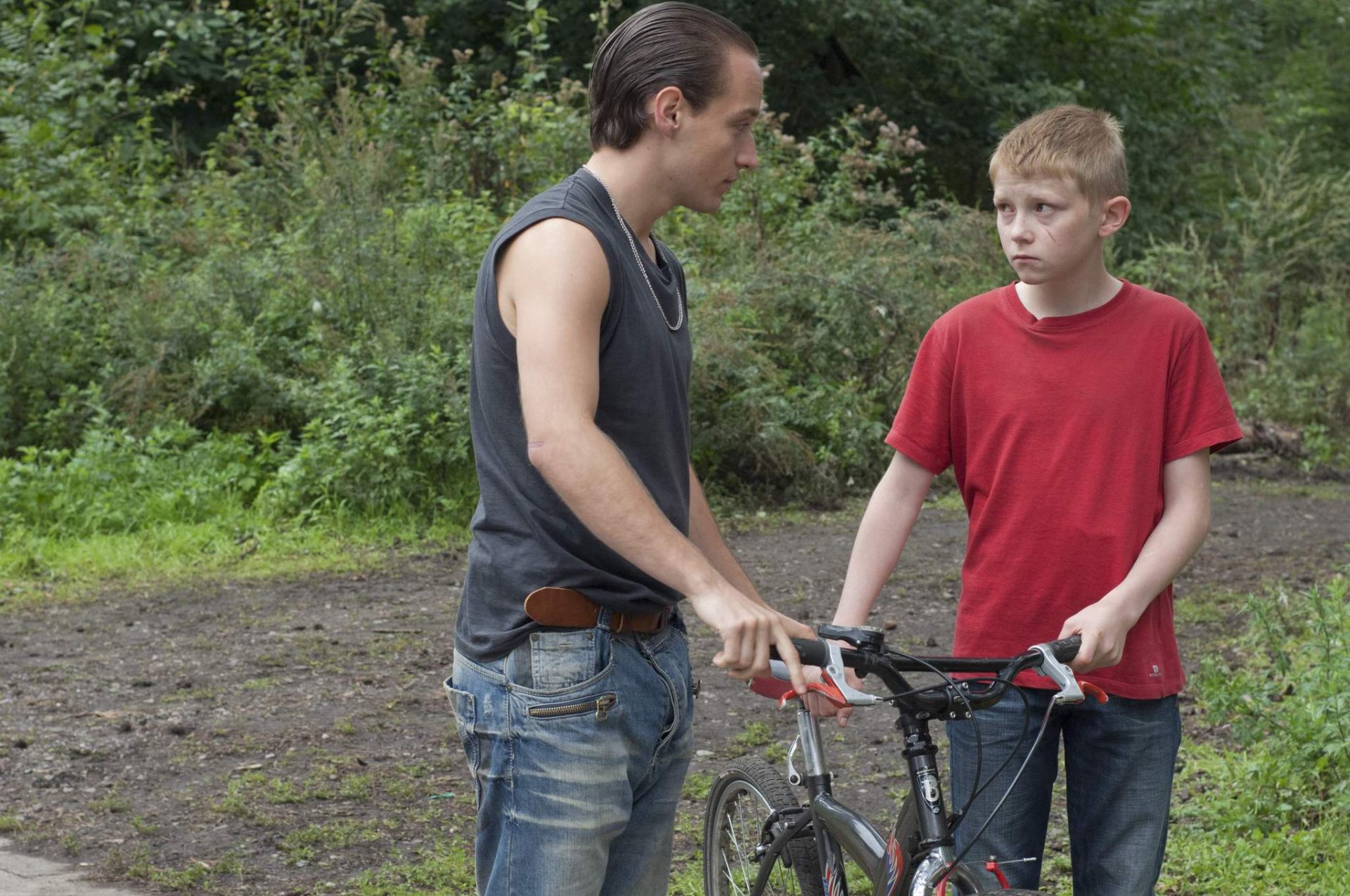
Dardennes’ The Kid with a Bike, like Rosetta, explores the rage of a child living on the fringes of society and confronting his incapable parent. The Kid with a Bike explores the life journey of 10-year-old boy Cyril, who could not accept his father’s betrayal of abandoning him. This leaves him in the state care, and later he accidentally comes across a kind local hairdresser named Samantha. Cyril forms an instant connection with the random lady in his foster home. He instinctively sees her as a beaming life of hope, compassion, and protection. He courageously asks her to take him out on weekends on their first meet. She, too, instantly agrees.
Dardennes’ inclusion of a kind-hearted motherly character is akin to a fairy godmother who protects him from getting into bad company, which he nearly does after agreeing to commit a petty crime in exchange for a new friendship with a street criminal. Despite Samantha’s repeated attempts to stop him, Cyril does the deed and ruins himself. Although she is a protective shield for a broken 10-year-old kid, his rage becomes unstoppable after his father’s betrayal. Eventually, Samantha’s persistence to bring Cyril on the right path finally pays off.
23. Moonlight (2016)
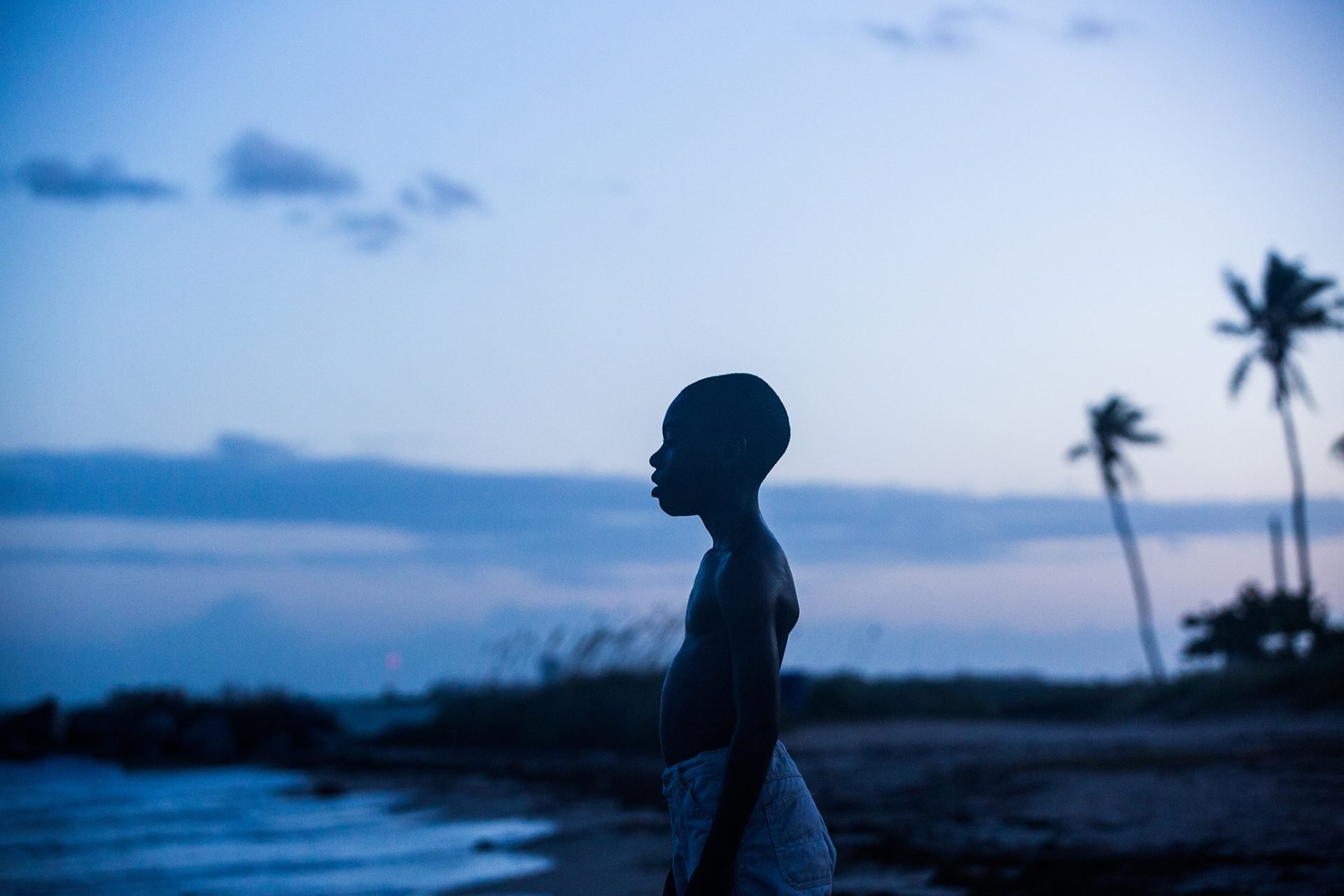
Barry Jenkins’ Moonlight offers an intimate look at the life of an African-American boy named Chiron, struggling in the hyper-masculine hood culture of Miami with a drug-addicted mother. The three stages of his life depict the opposing factors of societal expectations, bullies with well-wishers, and supportive people who aid in his development of him as an individual. The influential Juan (a drug dealer in the hood) gradually becomes a father figure to Chiron.
The unfortunate suspension of Chirron from school only dragged him back to his fate. His mother loses herself in prostitution while also harassing him for money. As an adult, Chiron is called ‘Black’ and has to act as a tough cookie to survive in his hood and drug dealing. The free random movement of breeze and waves are a visual embodiment of breaking free from an external influence. The Moonlight signifies a comfort place for Little/Chiron/Black where he truly can be himself. He embraces Kevin under the moonlight, and after several years, he confesses his love for him.
Related to Movies About Poverty: Exploring Black Male Queerness and Notions of Masculinity in Moonlight
24. American Honey (2016)

Andrea Arnold shifts the demography from Britain’s despaired teens in Fish Tank to American youth’s desperation for independence in American Honey. The film starts with a young girl named Star taking care of two kids with a toxic father figure. Lost and frustrated by her responsibilities at such a young age, she comes across a group of hipsters while hunting for food in bins. Their infectious happiness makes Star eager to be part of their tribe. She makes an instant connection with Jake, who invites her to join them. They are rebellious youngsters who fled from their homes to sell magazines door to door and live on their own terms. Star instantly takes the opportunity to leave her toxic home and start a new life journey.
Star suddenly has an ambition and starts manifesting a better future with Jake. Star’s unpredictability reflects her innocence, while her comfort with her sexuality reflects her boldness. As a result, Star exposes herself to life with extreme vulnerability and all future uncertainties in the form of random strangers and hazardous situations. Since her relationship with Jake comes to an end, the final shot of her walking towards the water represents hope and Star’s reincarnation as a new person.
25. Capernaum (2018)
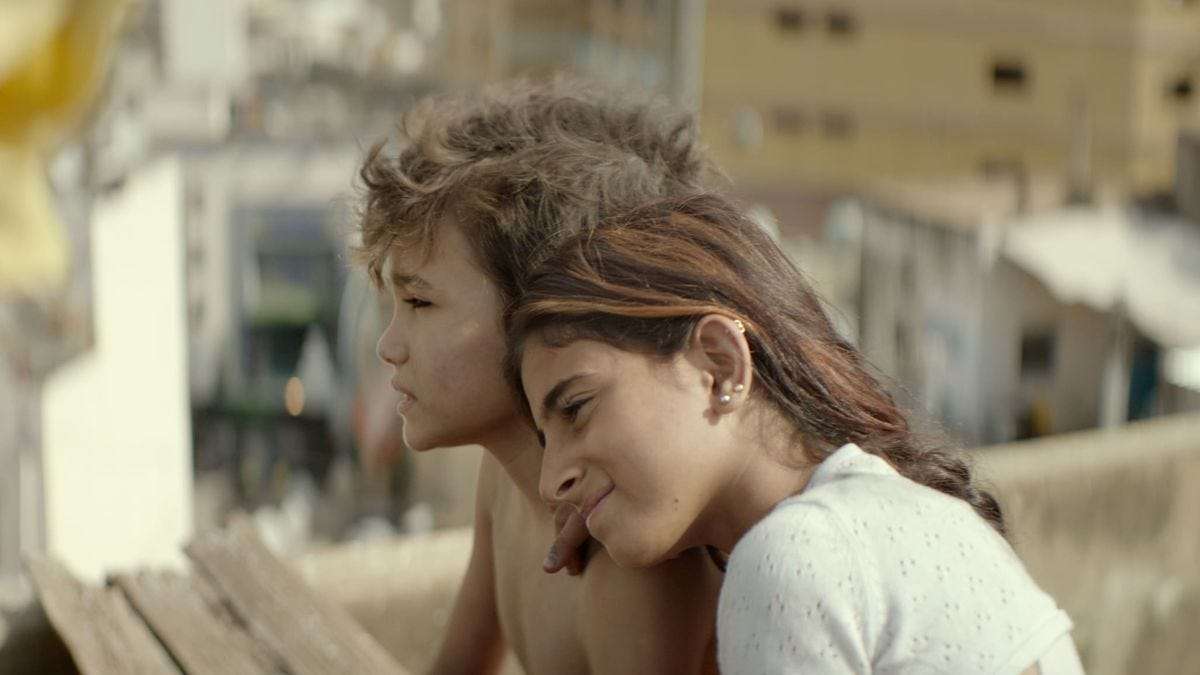
Capernaum revolves around the ultimate exhaustion of a 12-year-old boy living in the slums of Beirut, Lebanon. He is one of the breadwinners for his spineless parents, who are incapable of caring for their seven children but are planning for the next. The exposure to the unjust world from an early age leaves Zain with no option but to be emotionally resilient, intellectually wise, self-reliant, and tireless as he is consciously aware of his fate. He is too mature for his age as he takes care of his siblings. He is enraged at his parents, whom he blames for bringing him into this world with no resources, and at the heartless landlord, who is now preying on his younger sister.
Zain meets Rahil, an Ethiopian migrant, while on the escape from his home. He finds short-lived contentment and happiness in looking after Rahil’s son until she gets arrested. Zain gets stuck with the toddler as the water connection, electricity, food, and gas get exhausted over time. Zain’s quest for a happy ending and a new beginning seems like an unattainable dream. The exhaustion of his soul lingers on his innocent face, which carries the wisdom of the wretched world as he forgets to smile in the end.
Also, Read: 10 Great Dysfunctional Family Films of the Decade (2010s)
26. Parasite (2019)
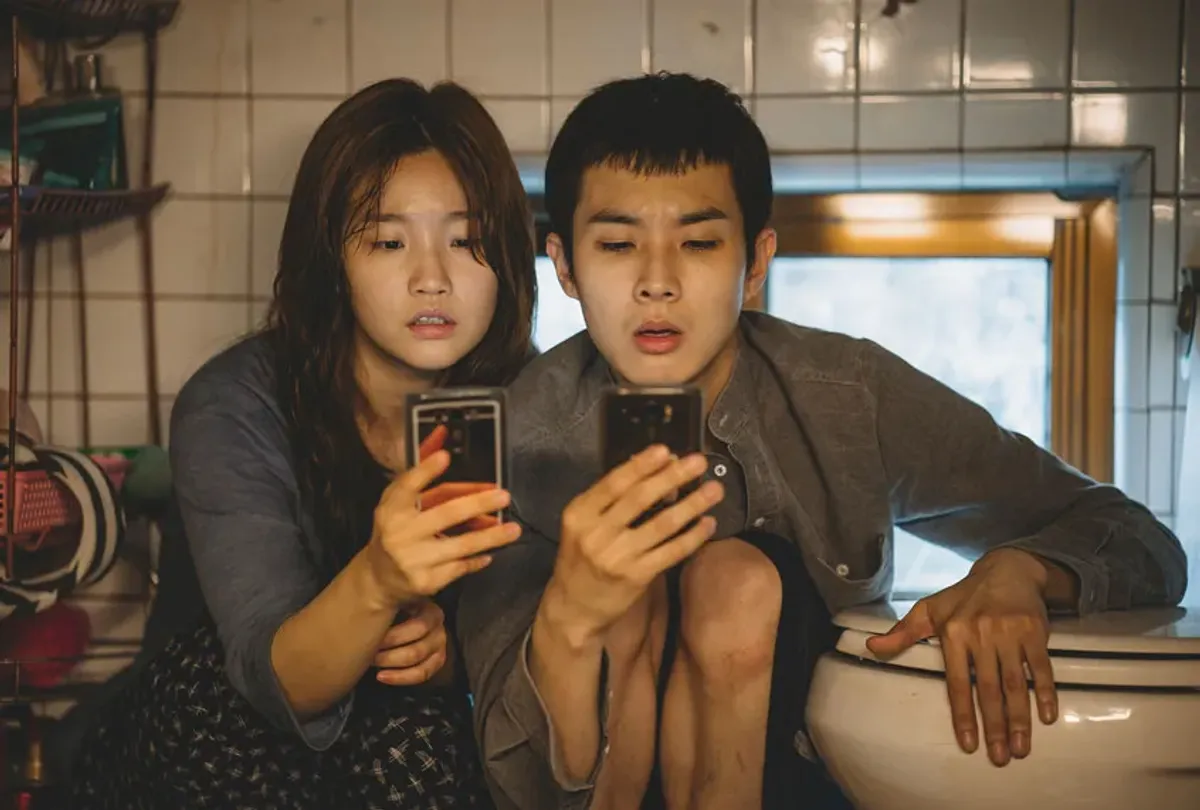
Bong Joo Ho’s Parasite is an exemplary masterpiece about the insurmountable divide between the privileged and the underprivileged. It is a contrasting mirror of the two entirely different worlds of the wealthy Park family and the poor Kim family. When it tries to collide, it is destined to create havoc. In the Park mansion, the Kim family sees a slew of job opportunities. They disguise themselves with false identities. Although each one of them is competent in their job, they are still ostracized by the Park family in a hurtful manner.
The Kim family employs the tool of manipulation to obtain job positions. There is a line, ‘They are rich but still nice, they are nice because they are rich,’ denoting the Park’s privilege to be nice while the Kims have to play politics to climb their way to the top in order to survive. The Kim family’s plans backfire. However, the Park remains unaware of sufferings, denoting they are at the highest hierarchy, which is impossible to enter. The staircases, sunlight, and even the composition of the luxurious home represent the class divide that the Kims may never be able to cross.
Related to Films about the Vicious Cycle of Poverty: Every Bong Joon-Ho Film Ranked
27. I am No Longer Here (2019)
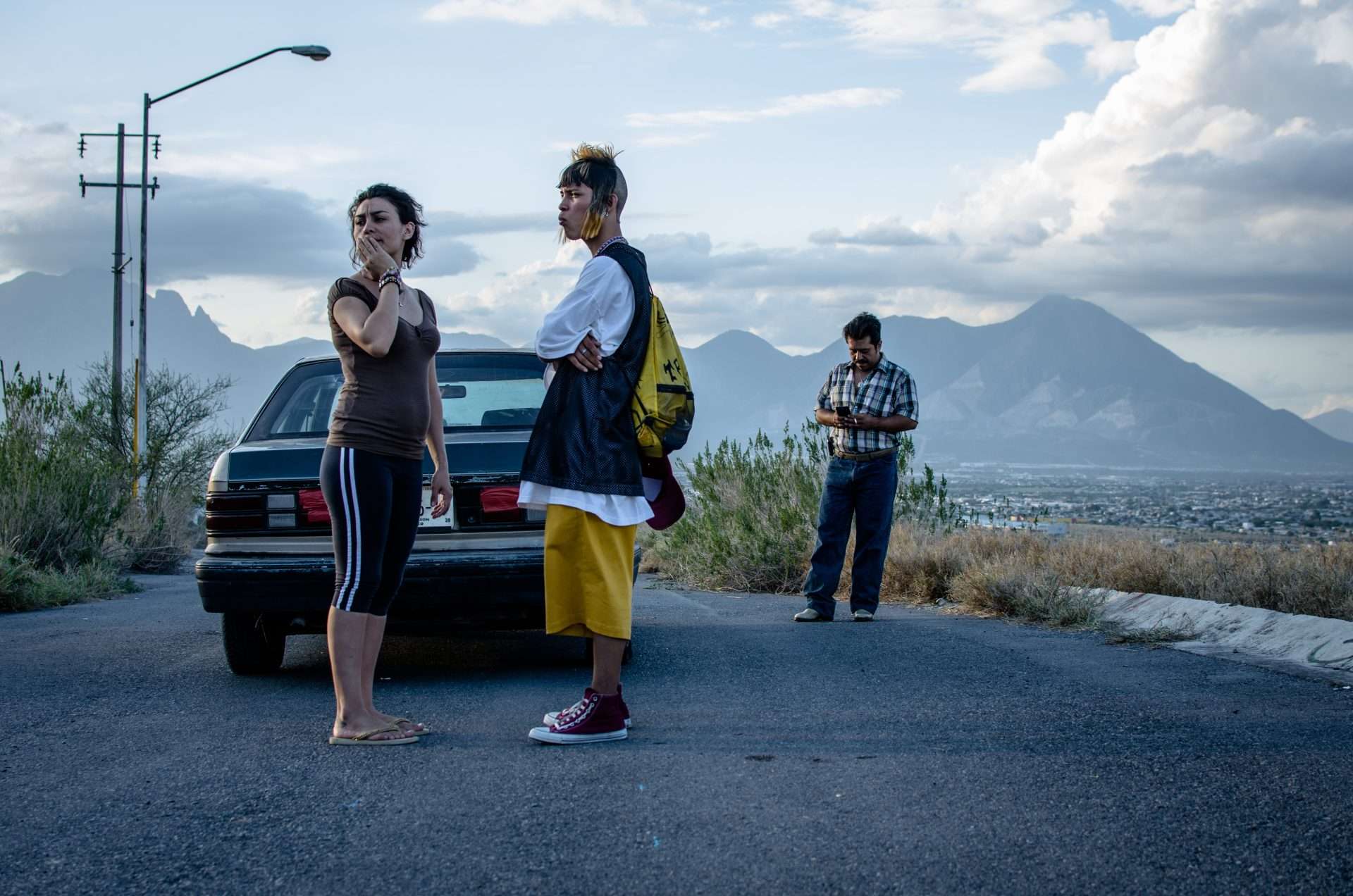
I Am No Longer Here revolves around Ulises, who lives in the Monterrey region of Mexico. He is passionate about traditional Cumbia music. He listens, dances, and loses himself to the beats with his local friends. Ulises sleeps, dances, party, and wander around all day with the group of street kids in his hometown. He and his friends are deeply ingrained in their Colombian youth culture. However, his gang rivalries quickly escalate into serious shootouts, prompting him to flee the city. Moreover, his family’s poor financial standing sends him to New York to earn money from menial jobs.
Ulises’ inability to adjust to the New York culture alienates him. His only escape is listening to Cumbia music as he reminisces about his forgotten roots. Despite the linguistic barriers and facing isolation from his colleagues, Ulises proudly keeps his unique hair and fashion style which belongs to his Los Terkos Mexican subculture. Ulises’ inability to communicate further isolates him. Director Fernando Frias captures the urban alienation in New York and the broader celebration of country life in a minimalistic manner. Ultimately Ulises goes back to his hometown to connect with his people, nature, and music.
28. Chicuarotes (2019)
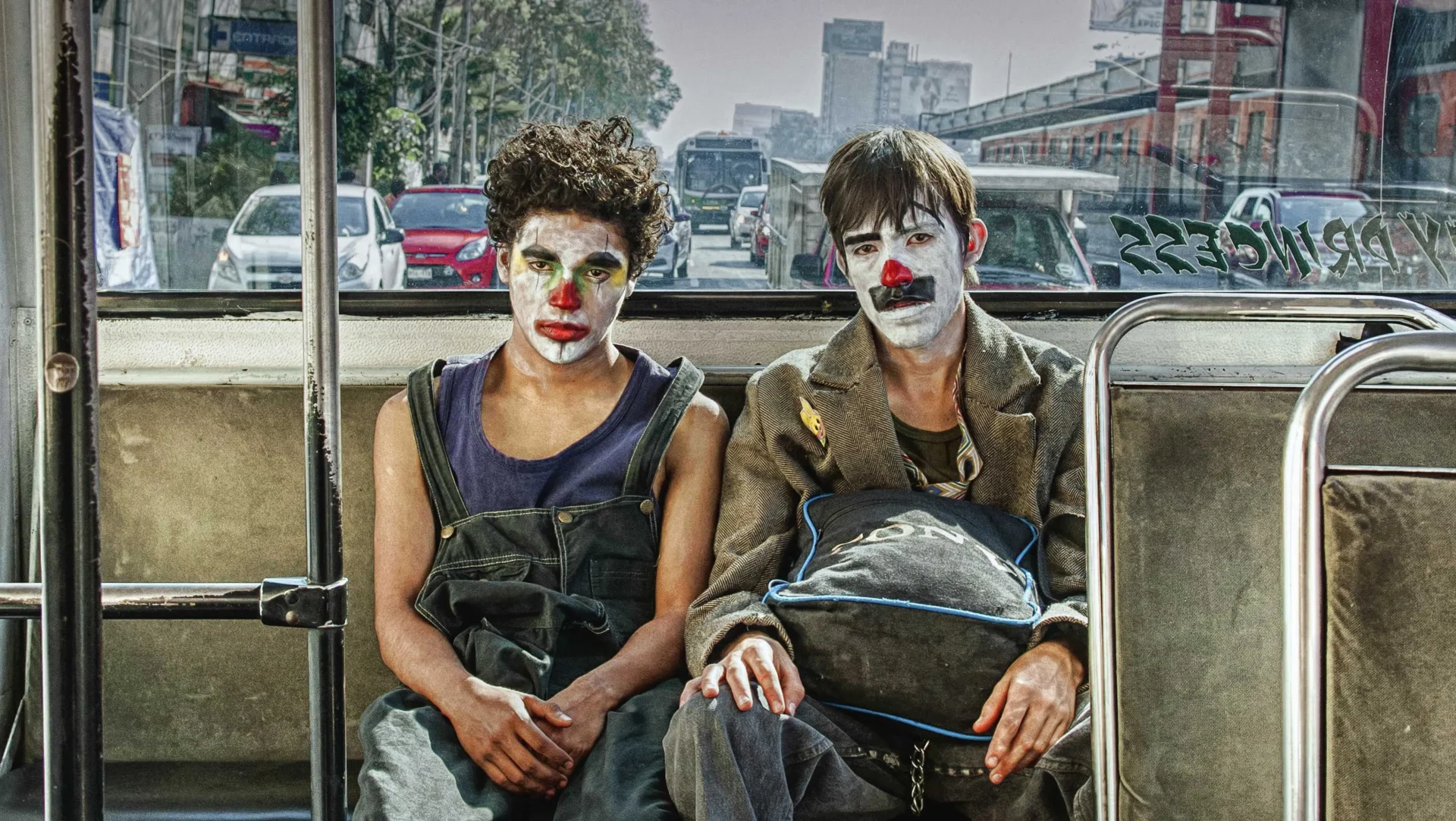
Chicuarotes is about two inept street artists, Cagalera and Moloteco, who turned to crime after failing to find work. Cagalera plans to leave the town with his much more sensible girlfriend, Sughelli (a subplot similar to Garcia’s iconic Octavio in Amores Perros). The dim-witted Moloteco lives in a tiny hut while Cagalera adjusts to a toxic home with an abusive father, his closeted brother, a sister, and a submissive mother. The desperate Cagalero manipulates Moloteco to help him in a small heist of a lingerie shop and to kidnap a neighborhood kid.
Cagalero tries his luck in everything to earn a fortune. After a failed shop theft, frustrated with his fate Cagalero impulsively abducts a local boy and plans to ask for a ransom from his father. Cagalero, Moloteco, and Sughelli fall under the suspicious gaze of a local corrupt policeman. Soon, a witch hunt for the kidnappers starts across the whole town and threatens to give them a public punishment. The local policeman tries to take advantage of the trio’s situation. The carelessness and impulse to earn a fortune and leave the town by hook or crook jeopardize his life, his family’s, and Sughelli’s life.
29. Kajillionaire (2020)

Miranda July’s Kajillionaire tells the story of a 20-year-old aimless scam artist escaping the clutches of her manipulative parents. The protagonist, Old Dolio, and her parents, Theresa and Robert, make a living by committing minor heists. Her parents have never shown any kind of affection to their daughter. She is a socially awkward grown woman in her mid-20s who has never experienced any real human connection. The entry of a lively stranger Melanie in the weird cubicle world of the scammers acts as a turning point for Old Dolio. Director July depicts Melanie as a Manic Pixie savior who introduces Dolio to intimacy, compassion, and human touch.
Miranda July’s pastel-pink sunny world is set in a modern world full of sensitivity. July does not display any background history of the parent’s cold behavior towards their child to evoke empathy from the audience; rather, she leaves it as a survival tactic of two sociopathic parents who are using their child as bait for their own greed. The elements of melancholy in the modern world and yearning for compassion have always been a part of Miranda July’s film universe. Kajillionaire is a powerful work of feminine gaze at the fringes of urban life where the main character has never experienced love.
Related Read: The art and the artiste in Miranda July
30. Hillbilly Elegy (2020)
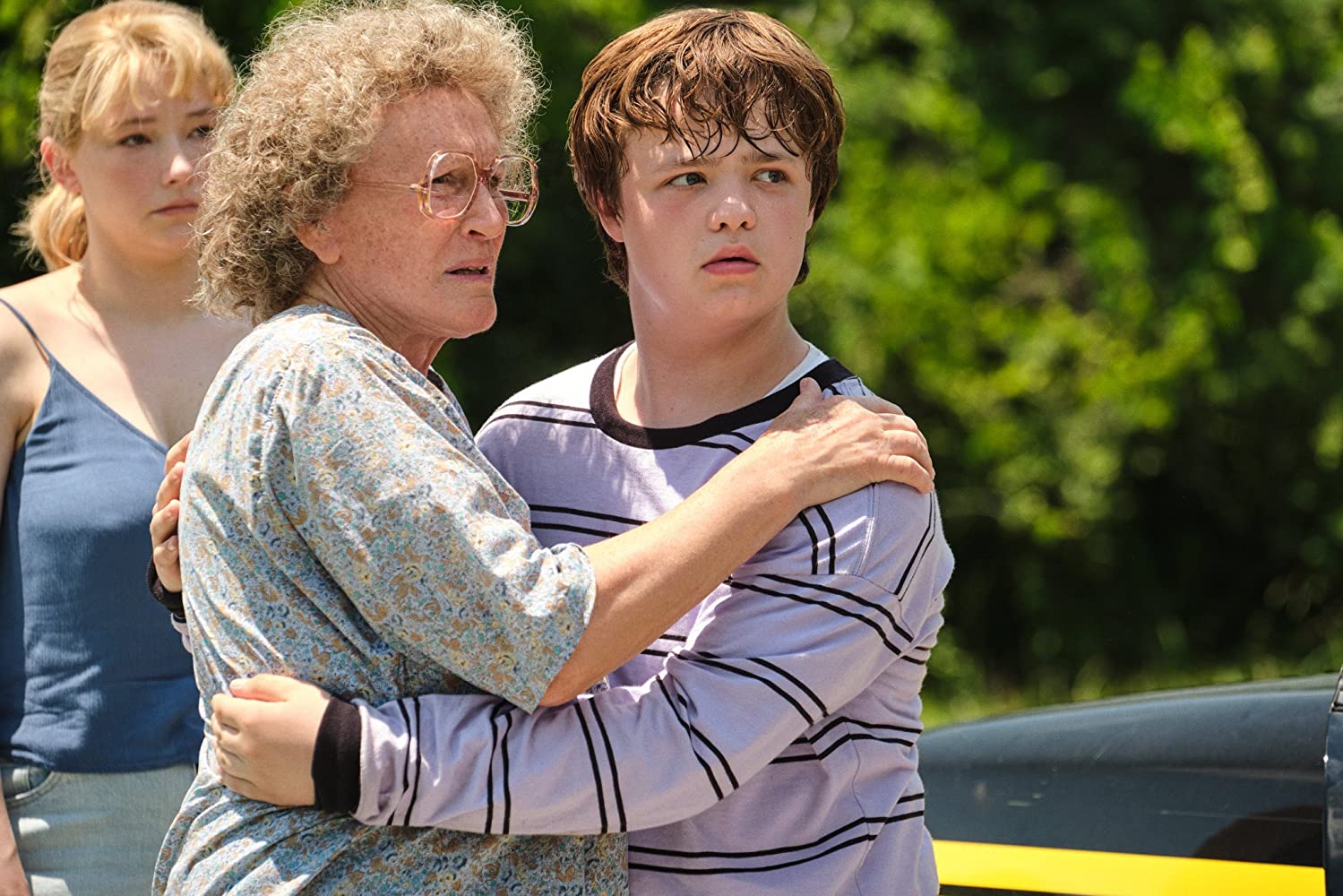
Hillbilly Elegy is based on the memoirs of J.D. Vance, the film’s main protagonist. Hillbilly Elegy explores several issues of classism, poverty, material addiction, and unemployment among white Americans. J.D. has been shifting from place to place with his unstable mother, Bev, and sister. His family had a generational history of domestic abuse, financial disparity, and material abuse. Moreover, J.D. had a highly dysfunctional relationship with his drug-addicted mother. His grandmother is called mamaw, and she has witnessed all the toxicity of her husband and daughter, Bev.
Thus, she motivates J.D. to change his wrong company of friends and focus on his studies to escape this generational pattern. He takes her advice, sincerely focuses on his studies, and gets accepted to Yale. Fortunately, Bev passed her academic goodwill to J.D., and his grandmother gave him the right direction and upbringing. This is the story of a small-town working-class boy who aspires to join the elitist class. He tries to fit in by learning cutlery, which represents America’s internalized classism. Despite his sufferings and lack of opportunities, J.D. was raised with core family values and moral ethics instilled in him by his matriarch grandmother.


